ANDES-CHOCO FOREST
-
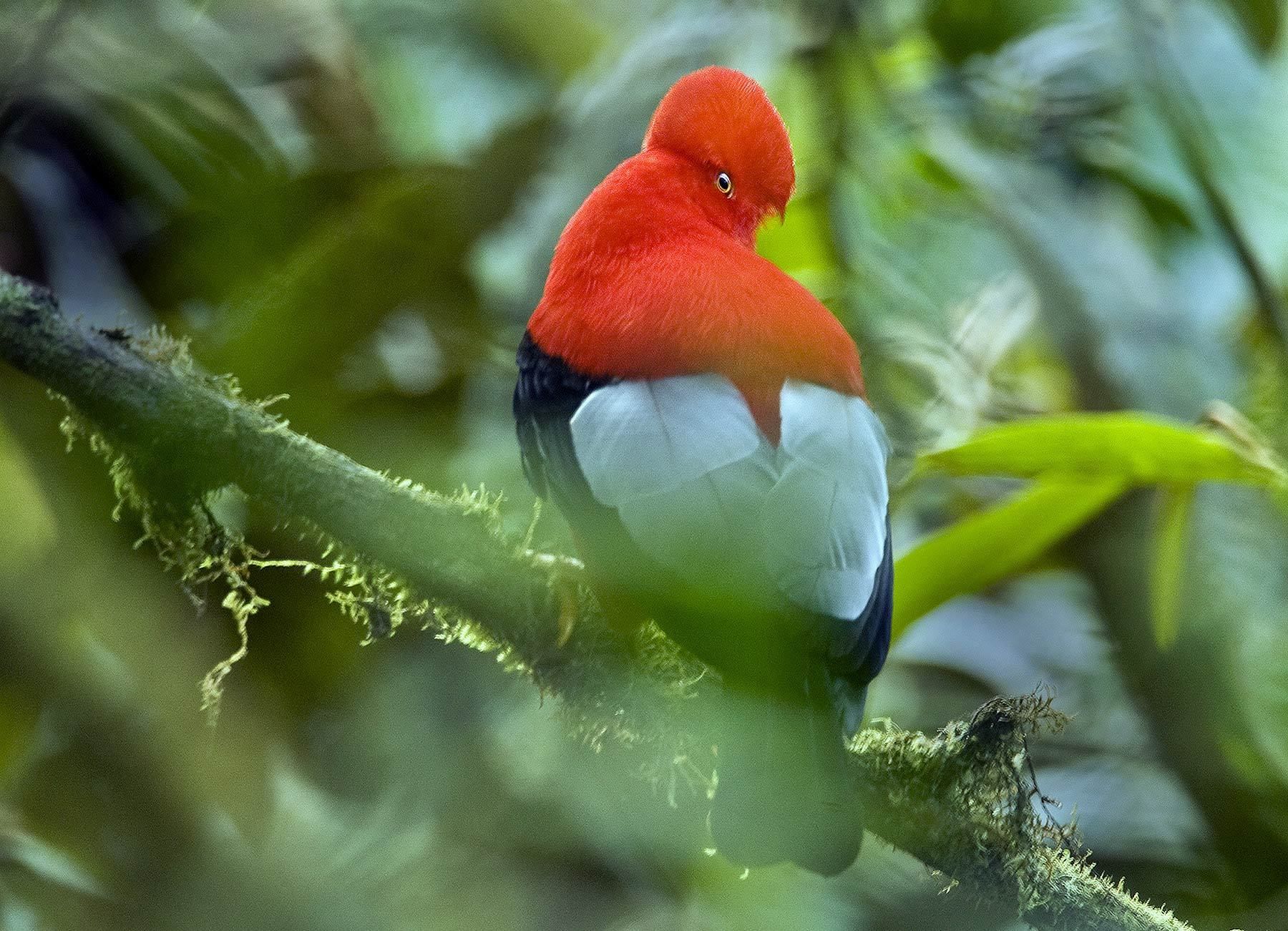
This male Andean Cock-of-the-Rock (Rupicola peruviana sanguinolenta) was photographed at 1200 meters elevation in the Mindo cloud forest of Ecuador on the western slopes of the Andes. This is the only area of the world where these birds are colored a brilliant scarlet red. On the eastern side of the Andes and throughout Peru - where it’s the national bird - they are more orange in color. Easily disturbed by human activity, it is difficult to get a look at the crested males who dance in the treetops, performing vigorous displays for onlooking females. Up to a dozen males may gather in a breeding system known as a "lek." If a female arrives, the males perform a dance to impress her. Mindo is situated in the Chocó Endemic Bird Area (EBA) and the Chocó Biogeographic Region, one of the world's richest biogeographical areas. This region supports the highest number of restricted-range birds of any EBA in the Americas at over 50 species.
-
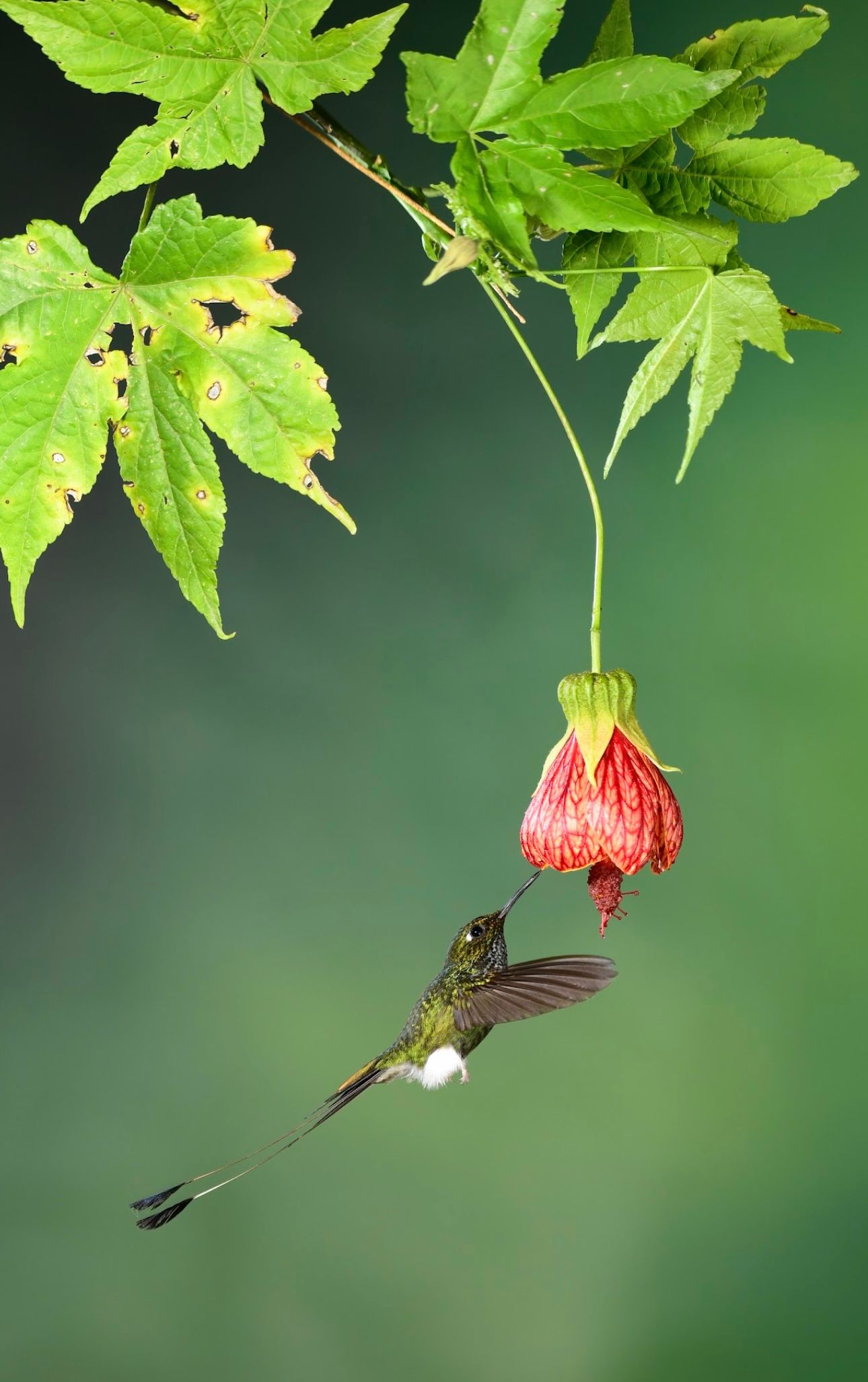
Male White-booted Racket-tail Hummingbird photographed in Tandayapa Reserve, Ecuador known locally as the Colibrí de Raquetas (Ocreatus underwoodii)
-
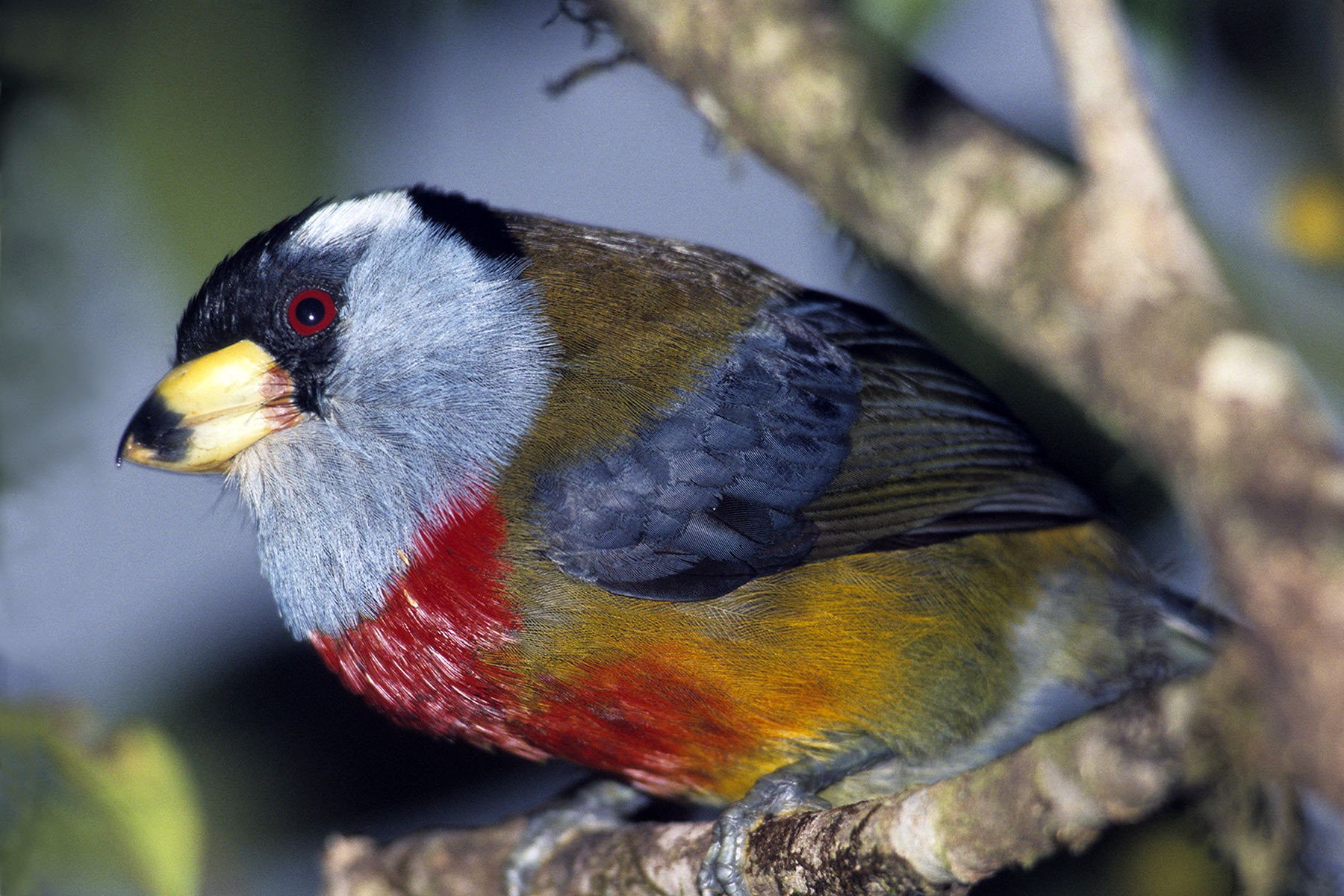
The Toucan Barbet (Semnornis ramphastinus ramphastinus) - pronouced like “Barbie” - is a cloud forest treasure. This wild male was photographed at 1900 meters elevation in the Otonga Cloud Forest Reserve. Their inquisitive nature is as colorful as their plumage.
-
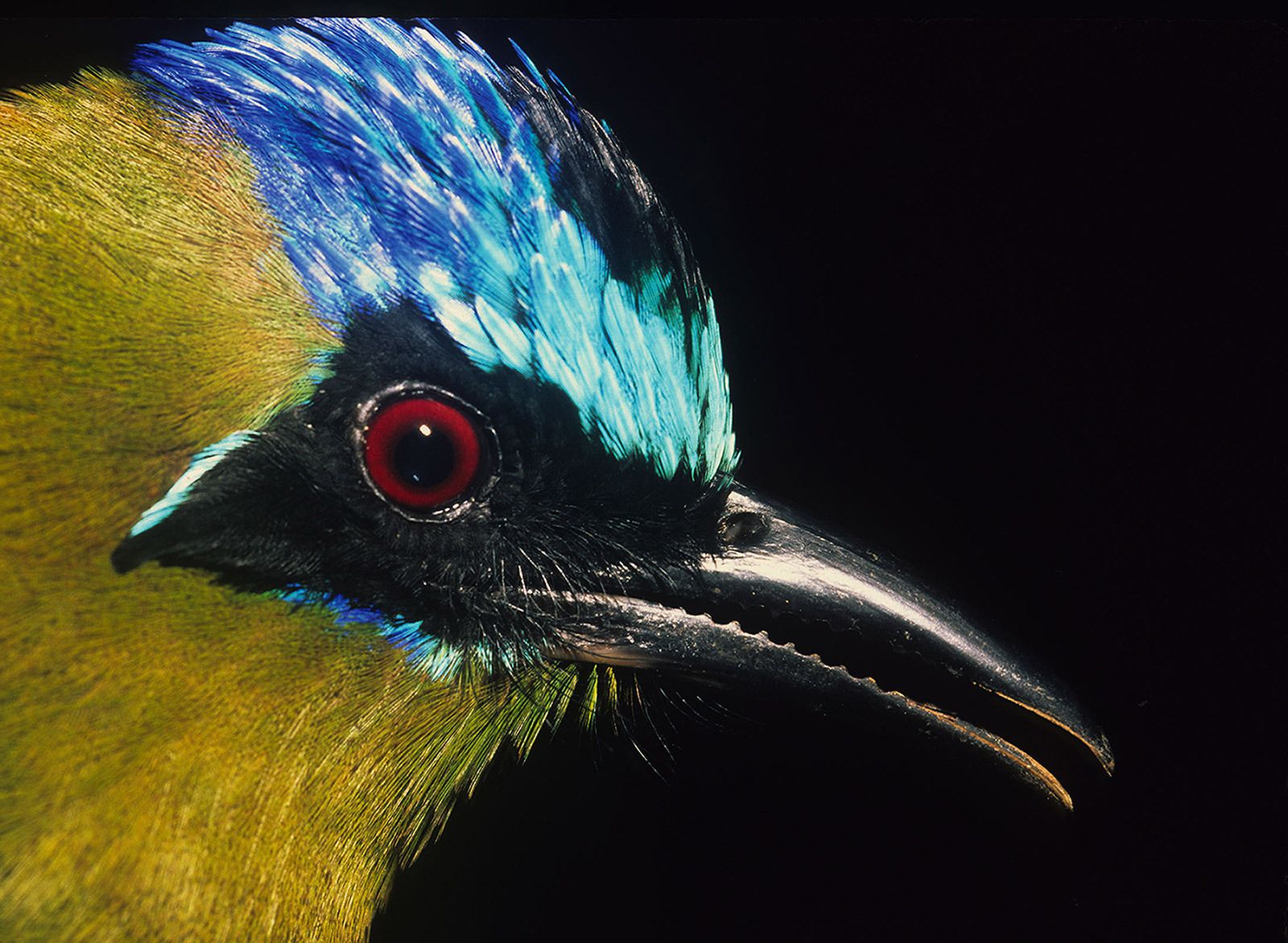
The flashy crown of the Blue-crowned mot mot (Momotus momota) actually help it hide in the dappled light of the rainforest understory.Photographed moments after release by ornitologist during a wildlife study in the Yasuni National Park and UNESCO Biosphere Reserve, western Amazon basin, Ecuador
-
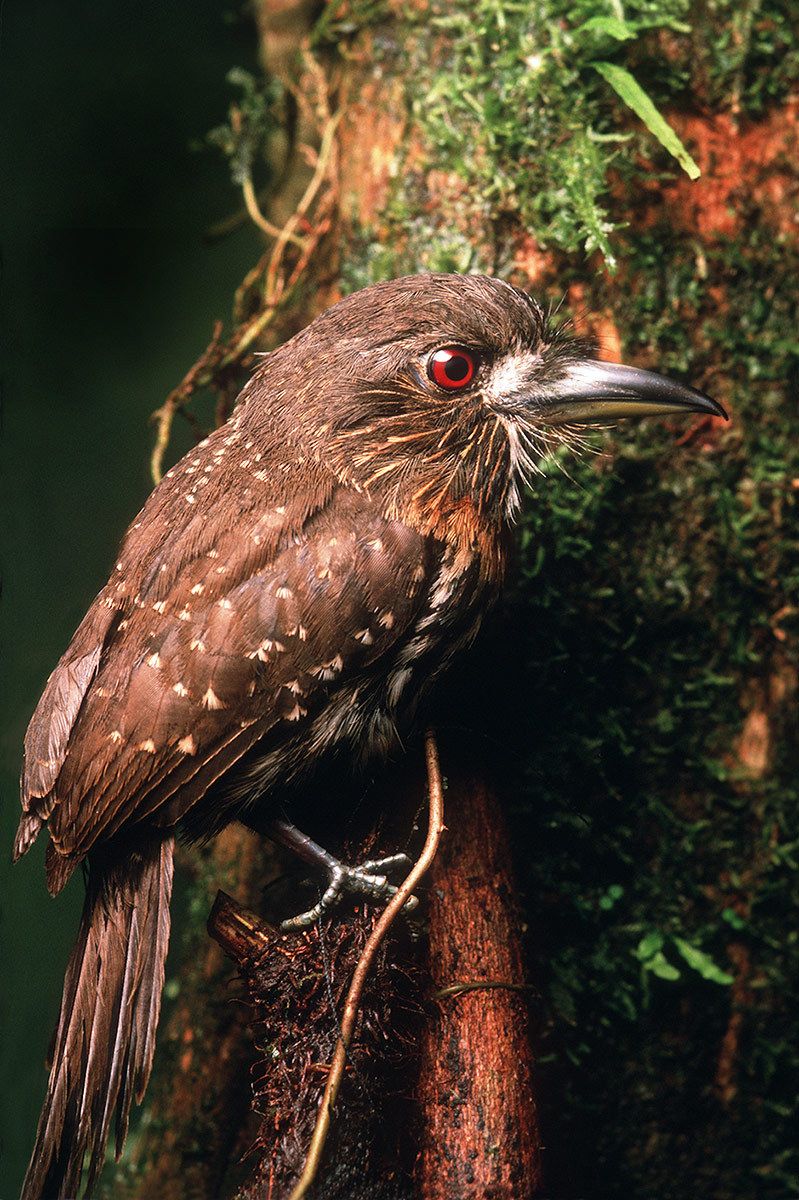
The White-whiskered puffbird (Malacoptila panamensis chocoana) is known to follow and eat army ants on the forest floor. This individual was photographed during a biological inventory in Ecuador.
-
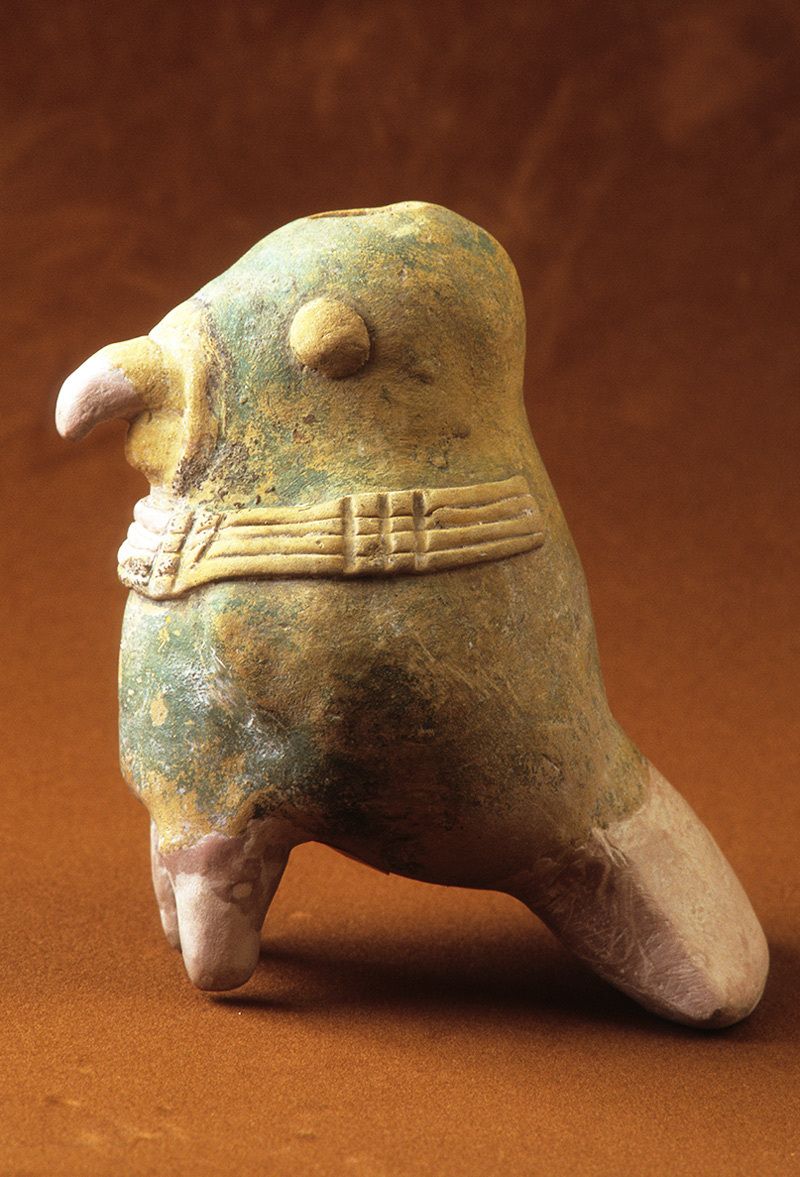
Zoomorphic artifact resembling a bird from the Tolita Culture (90BC-270AD) of Western Ecuador. Photographed with special permission from the collection of the Weilbauer Museum, Quito, Ecuador.
-
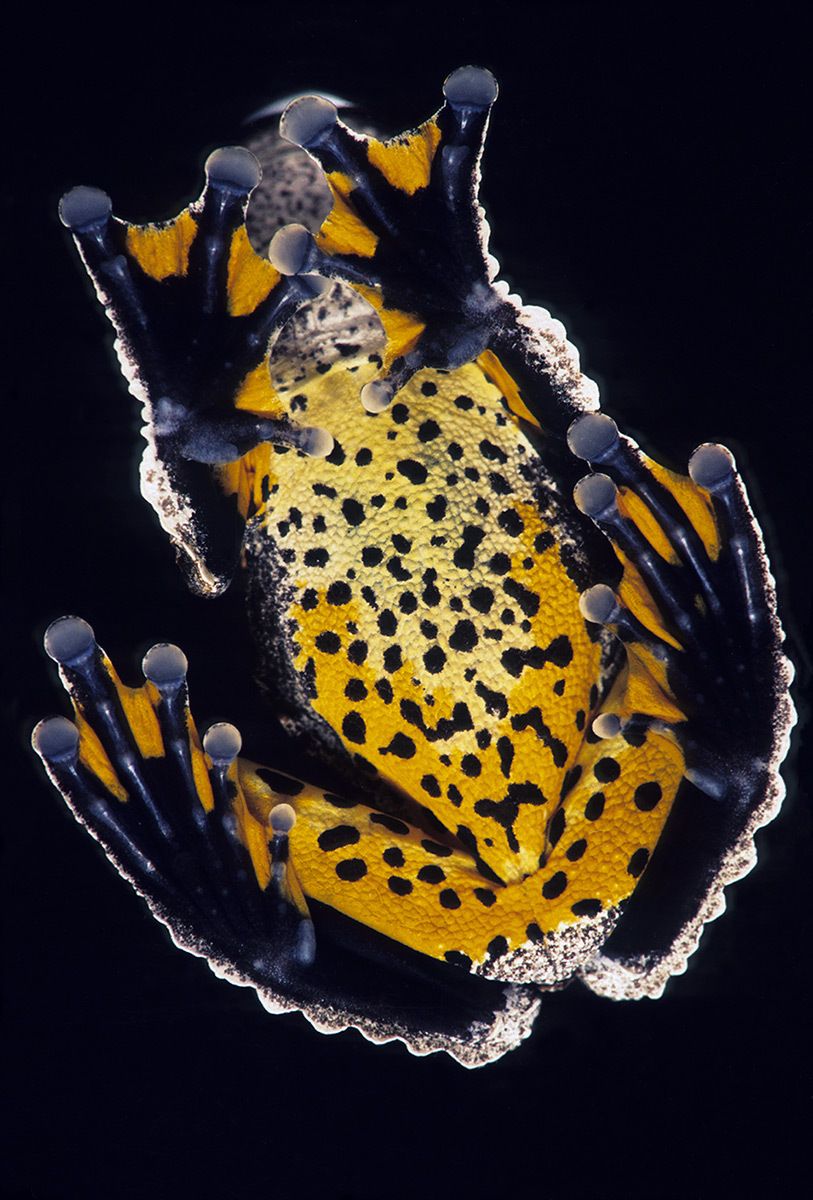
This treefrog (Bufo “margaritifera” complex) has a dorsal surface that blends with the muddy rainforest floor. Photographed on glass, one sees the colorful ventral side of the animal and the suction cup nature of the prehensile toe pads. Photographed in the wild in lowland rainforest near Ahuano, Ecuador.
-
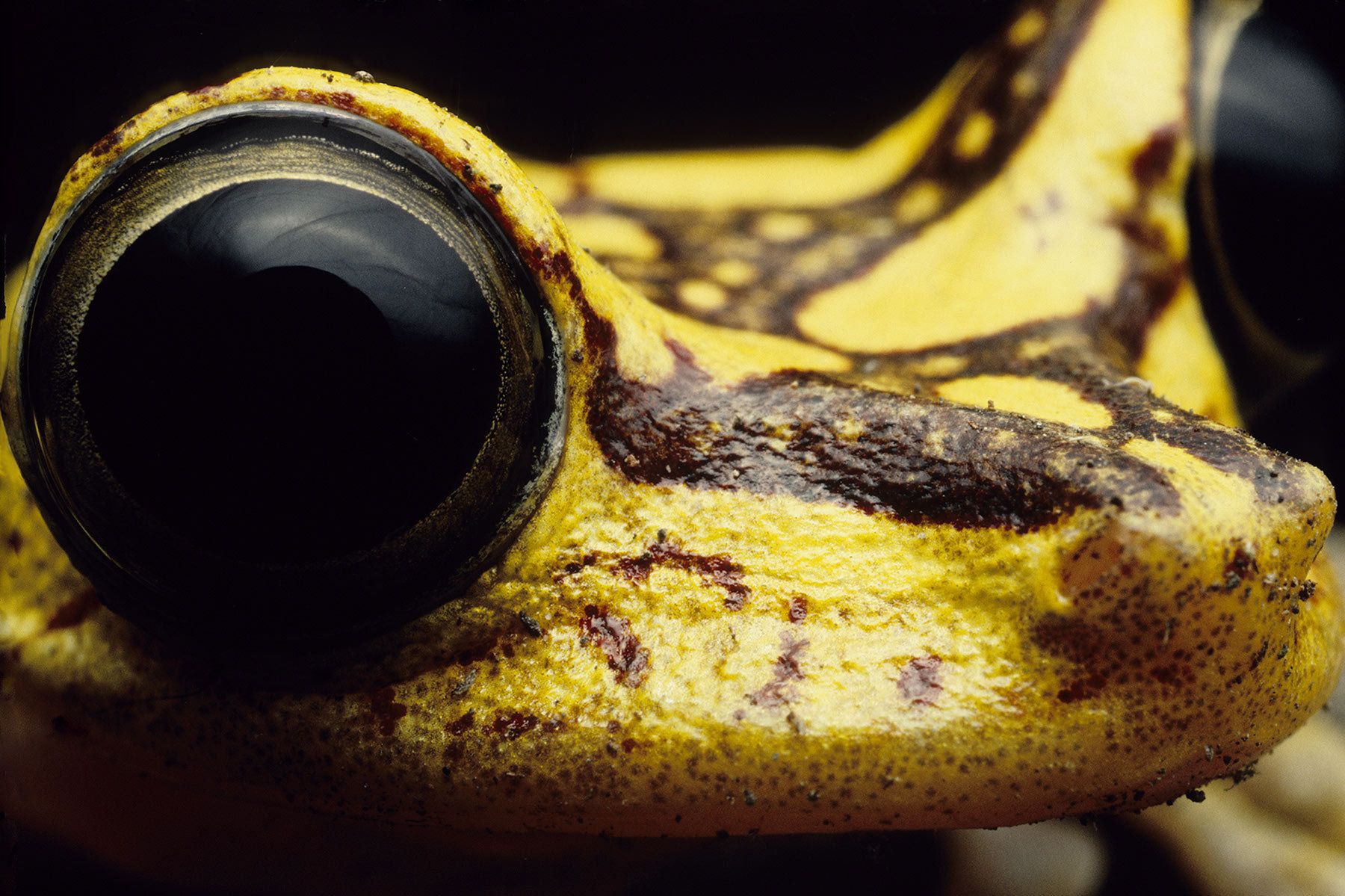
Reflected light on the protruding eye of the Imbabura tree frog (Hyla picturata) depicts concerns that global warming and contaminants in the atmosphere are impacting amphibians worldwide. This frog was photographed during a biological survey by Ecuadorian herpetologists. Support the amphibian research & education by my friend Dr. Luis Coloma at Centro Jambatu in Quito, Ecuador.
-
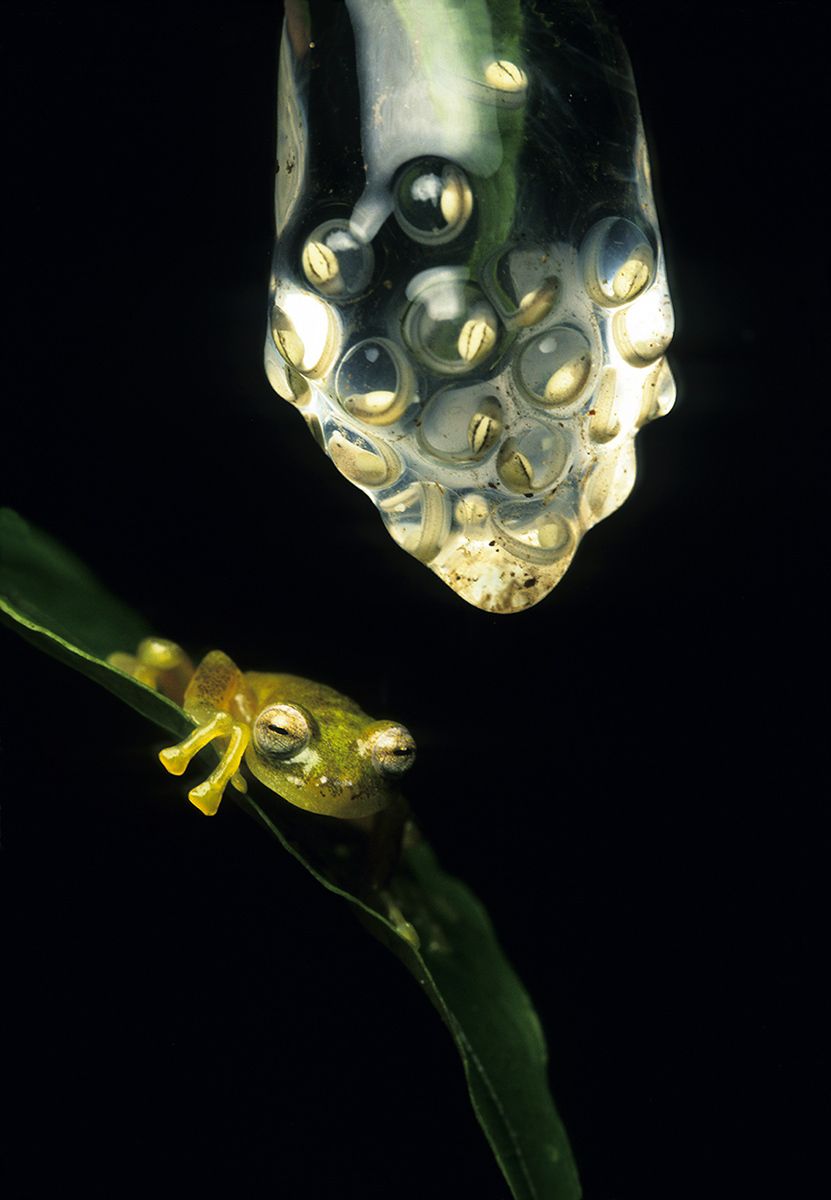
This glass frog (Cochranella griffithsi) is a new species found in Ecuador. Glass frogs are named for their translucent body. This male guards embryos developing in a gelatinous mass attached to a leaf's "drip tip." Heavy rains will knock the eggs into a stream below where the larva will complete their development. This photograph was made in the wild with a hand-held camera during a steady rain. An assistant held a large umbrella over my camera, strobe, frog and leaves so I could make this image. Photographed in the Otonga Cloud Forest Reserve of the Northwest Andes, Ecuador. Another fine organization involved in scientific research and training youth in citizen science is The Biodiversity Group. They are working with host communities in tropical and subtropical forest in Vietnam, Ecuador and Mexico.
-
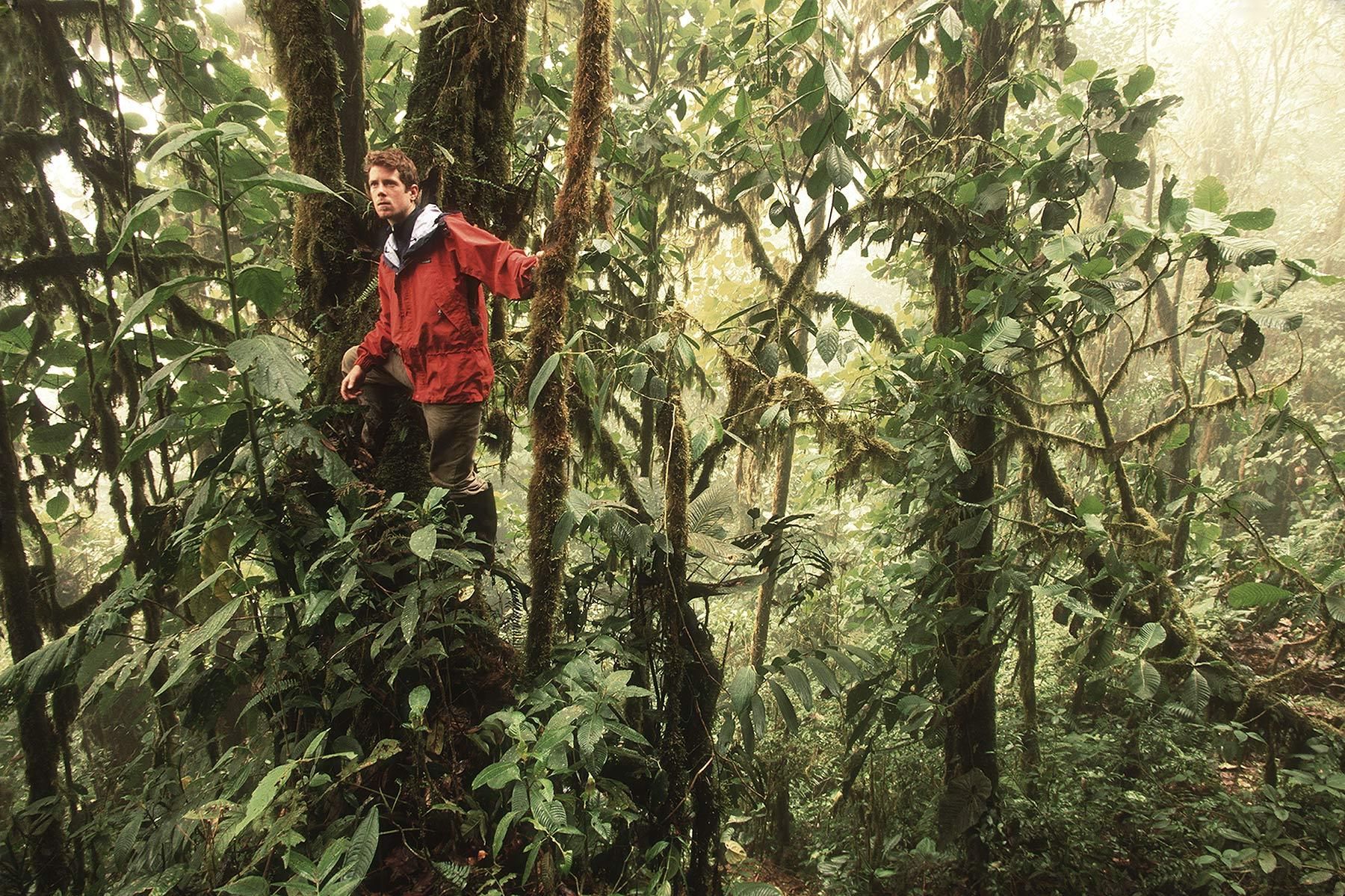
A hiker explores the primary forest of the Otonga Cloud Forest Reserve, in the transitional slopes of the northwestern Andes of Ecuador. The area is a island of herpetological and avian diversity where farming has converted much of the surrounding forest to pasture. The caretaker now works for the non-profit Otonga Reserve which has successfully bought farmland to expand the reserve and protect the wildlife. Fundraising has also enabled the caretaker’s children to study biology in college. Otonga, Ecuador.
-
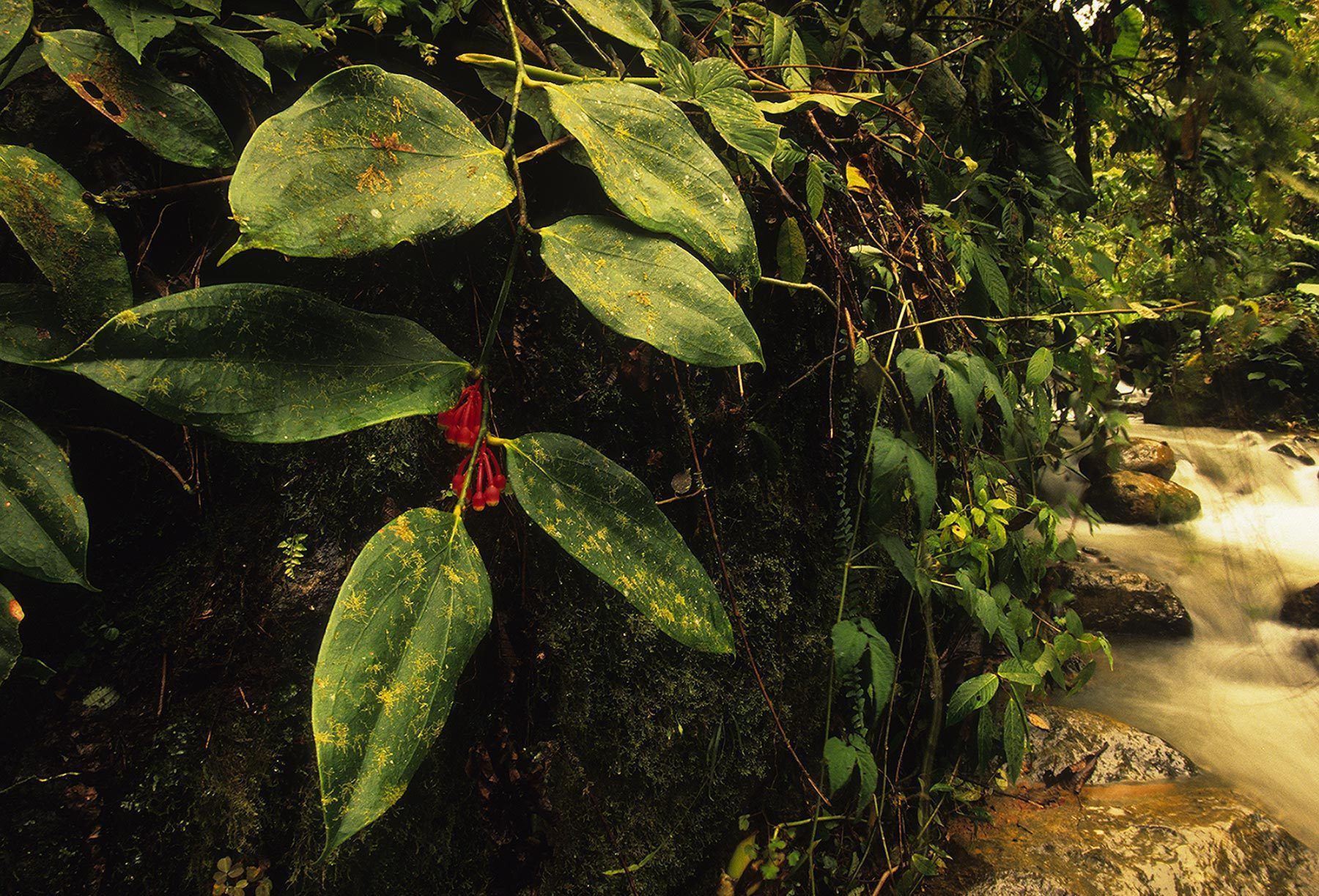
Flowers of the family Ericaceae grow on rocky ledges along the Otonga River in the northwestern Andes of Ecuador. Mr. Italo Tapia, caretaker for the Otonga Ecological Reserve, is a former rancher turned conservation steward.
-
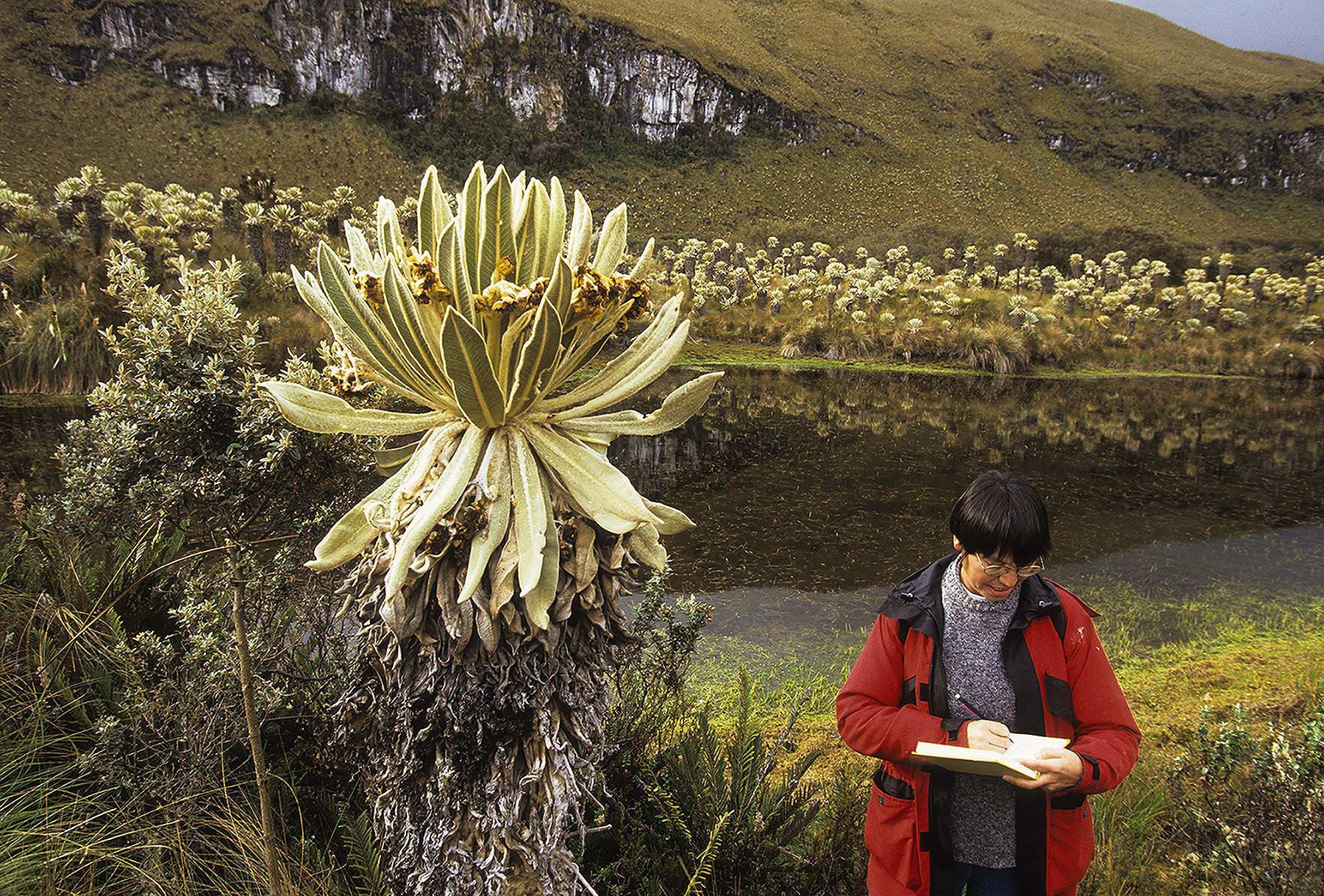
-
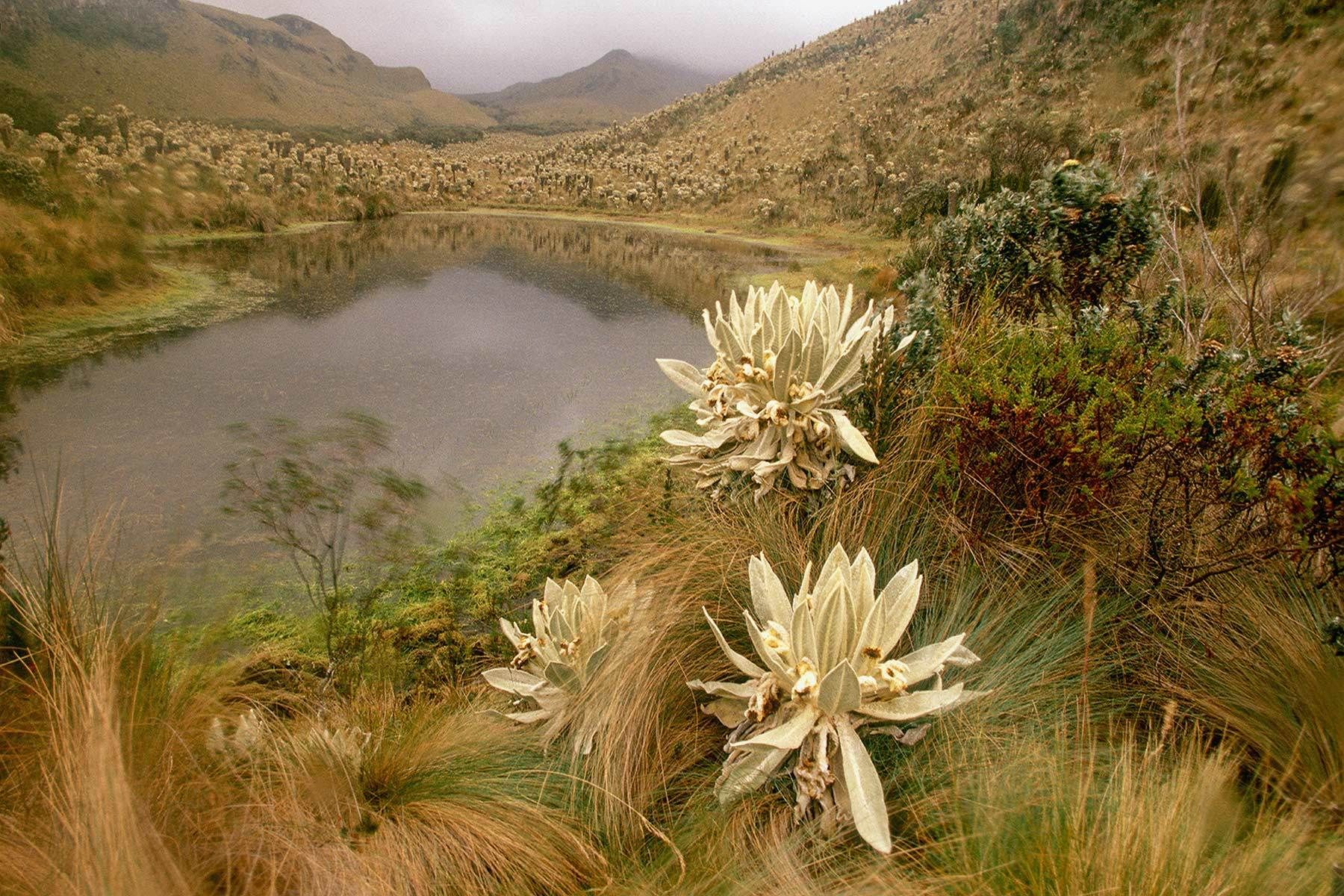
The surreal landscape of the El Angel Ecological Reserve (3,400 to 4,768 meters elevation) is home to the Frailejon plant (Espeletia hartwegiana), a large velvety-leaved member of the Aster family. Growing in clusters, the plants are also know as the "giant rosette forest."
-
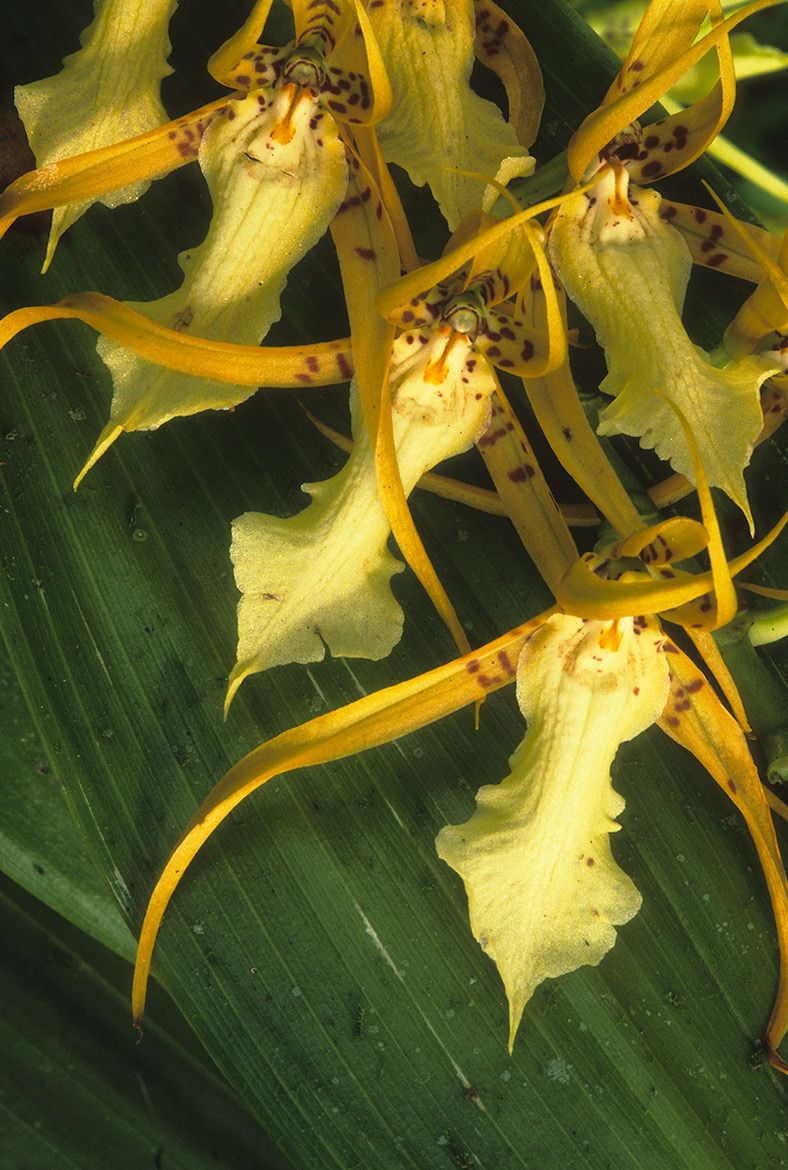
Orchid (Brassavola sp.) native to Guacamayo ranges (between Amazon and Andes mtns). Photographed in botanical garden near Tena, Amazonian Ecuador.
-
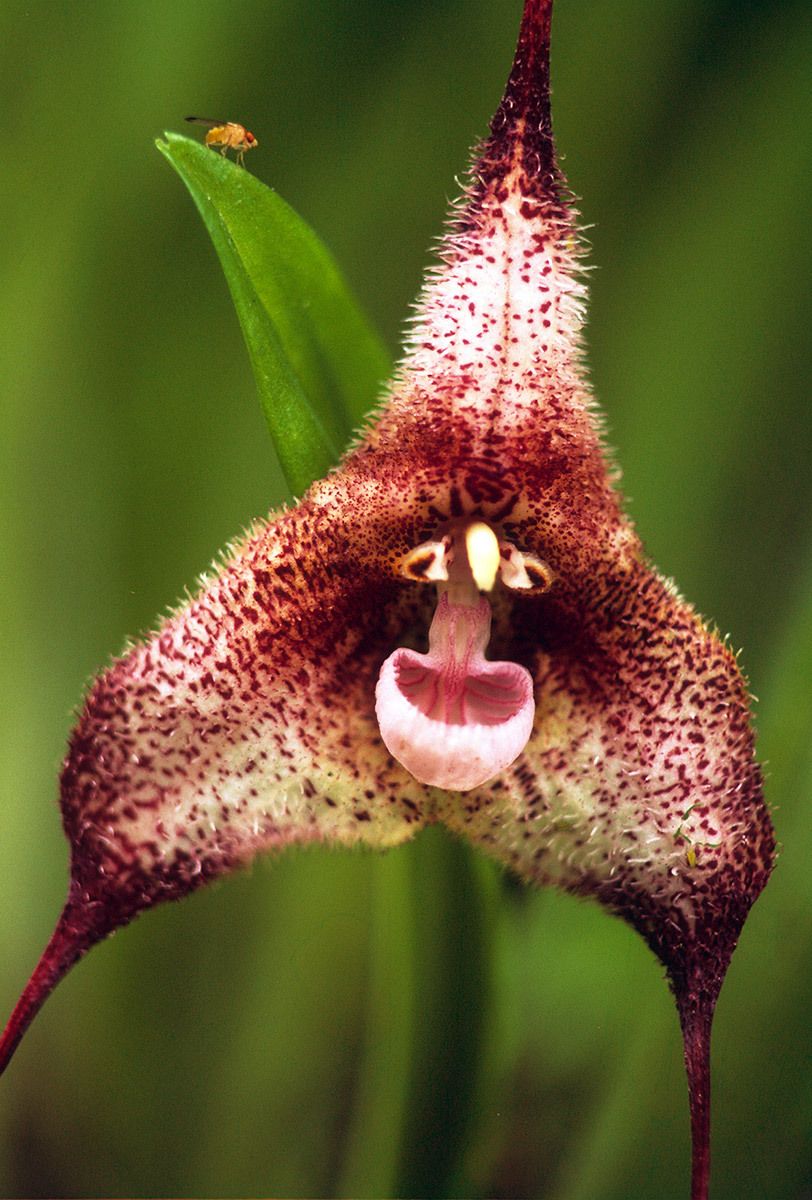
Rare orchid of the genus Dracula. The genera is named for a black orchid in the group. The small fruit fly (Drosophila spp.) at upper left may be a pollinator of the orchid. Photographed near Mindo in cloud forest on the northwest slopes of the Ecuadorian Andes.
-
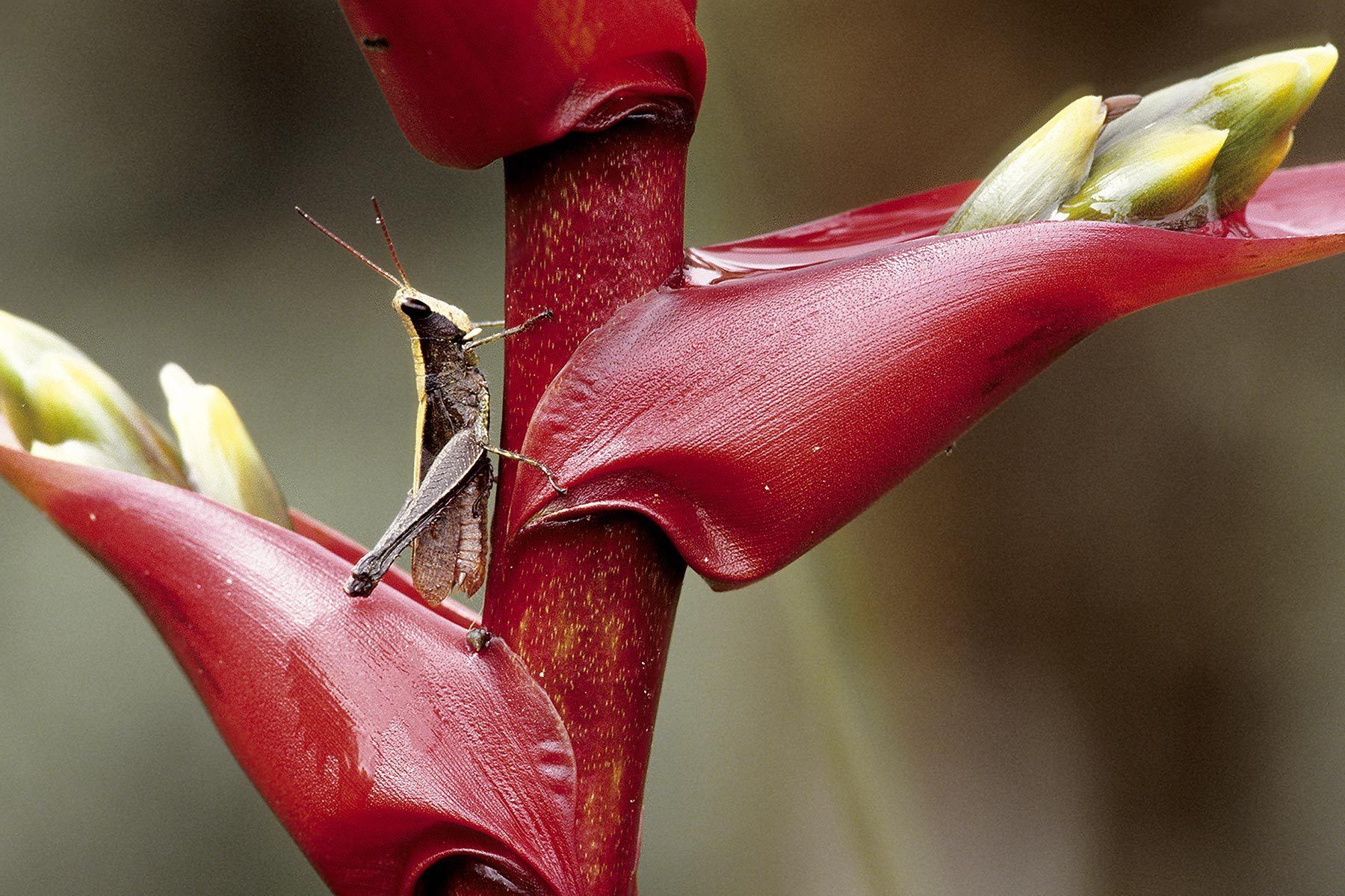
A grasshopper rests on a bromeliad plant (Family Bromeliaceae), the same family as the pineapple. The red bracts, which support the yellow inflorescences, gather water and fallen organic materials and serve as habitat to insects and frogs. The bromeliad receives nutrients from the animals' waste materials and decomposition. Photographed near the community of Toachi, Ecuador
-
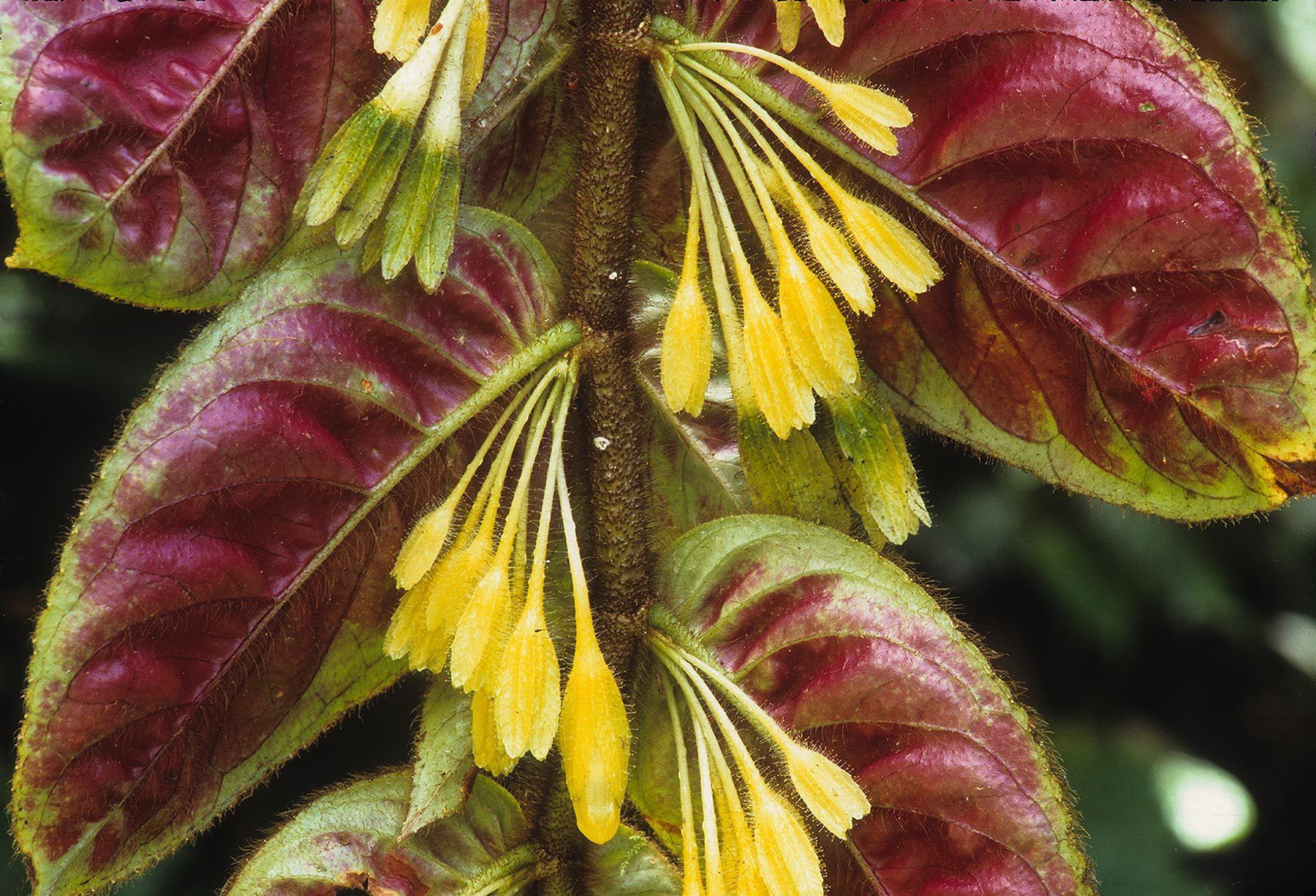
Like most members of the Gesneriaceae family, this species (Trichantha ciliata) is a specatcular herb of the forest understory. Otonga Cloud Forest, northwestern Andes, Ecuador
-
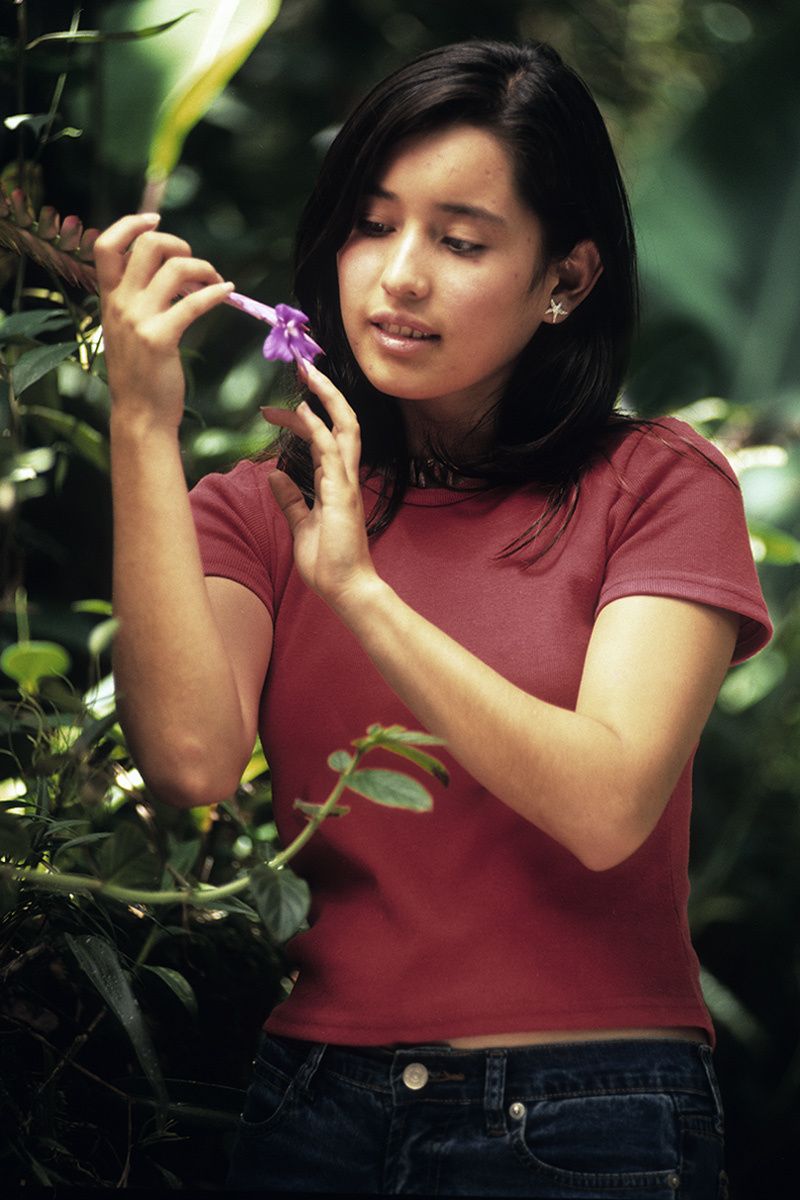
Visitor to a garden in the community of Mindo, Ecuador examines a flower.
-
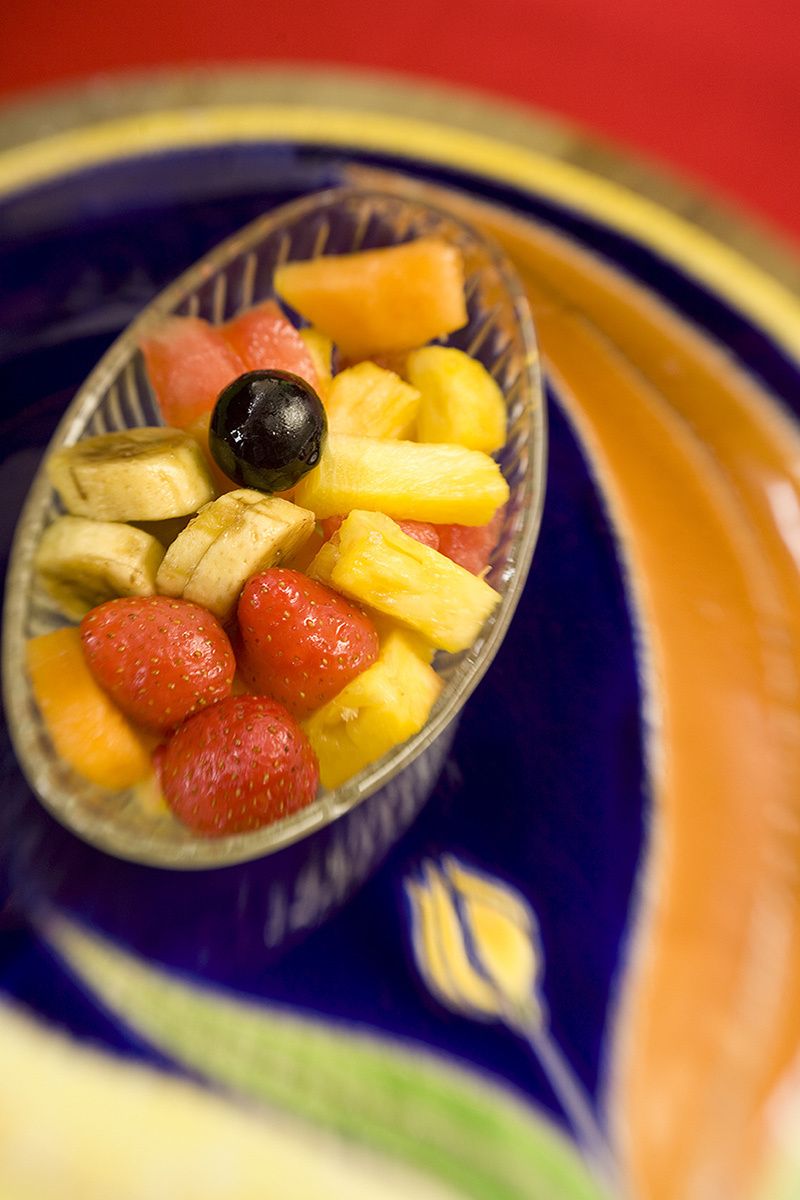
Fruit salad prepared at ecotourism lodge in Mindo, Ecuador is presented on a plate by Ecuadorian ceramic artist Eduardo Vega.
-
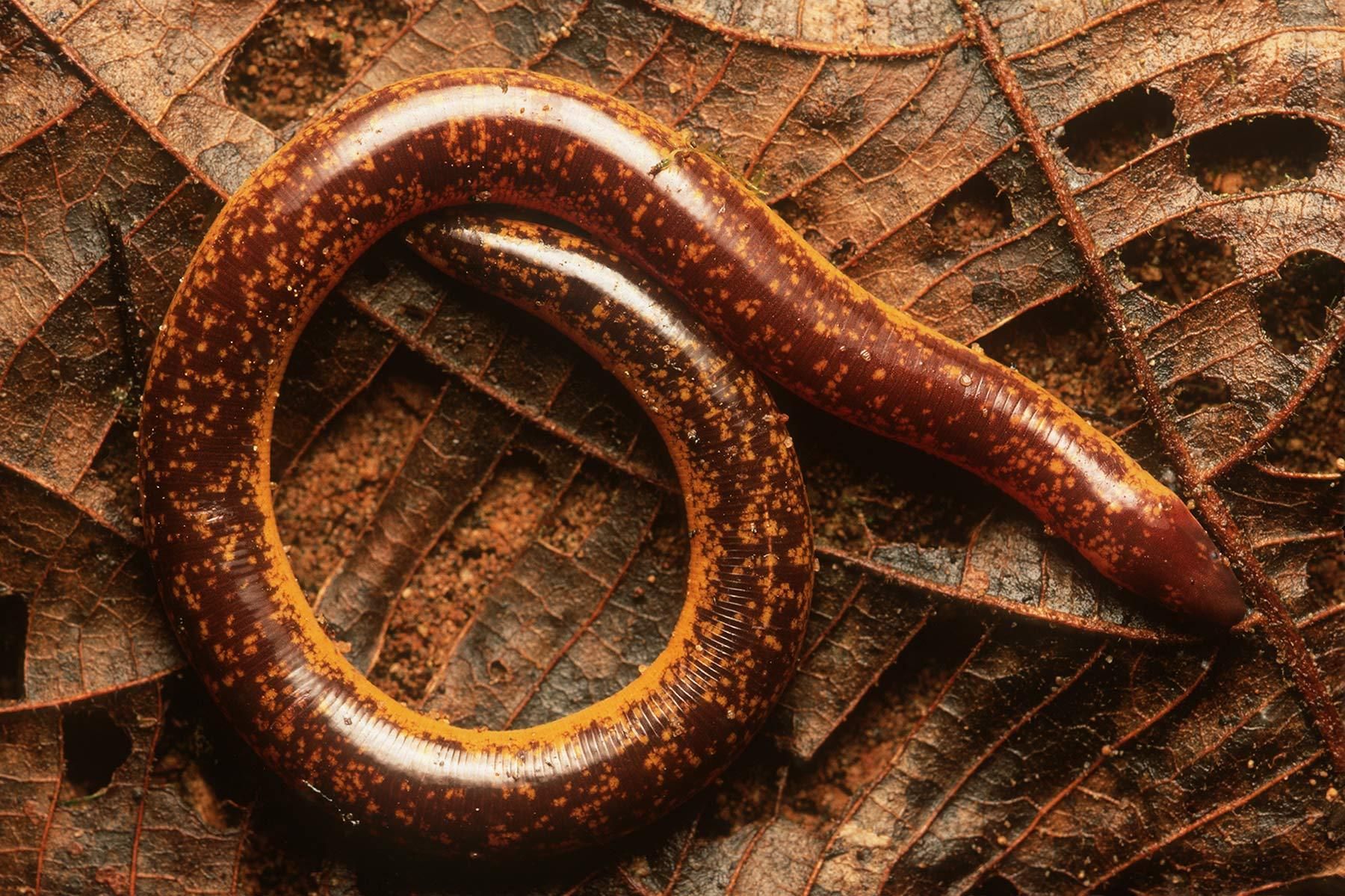
This legless amphibian (Epicrionops bicolor), measuring about 10 inches in length, is related to frogs and salamanders. They live underground but surface after heavy rains. Because of this, their natural history remains largely unknown. Photographed at the Otonga Cloud Forest Reserve on west facing slopes of the Ecuadorian Andes, it is known locally as the “Otongorito”, meaning little Otonga one.
-
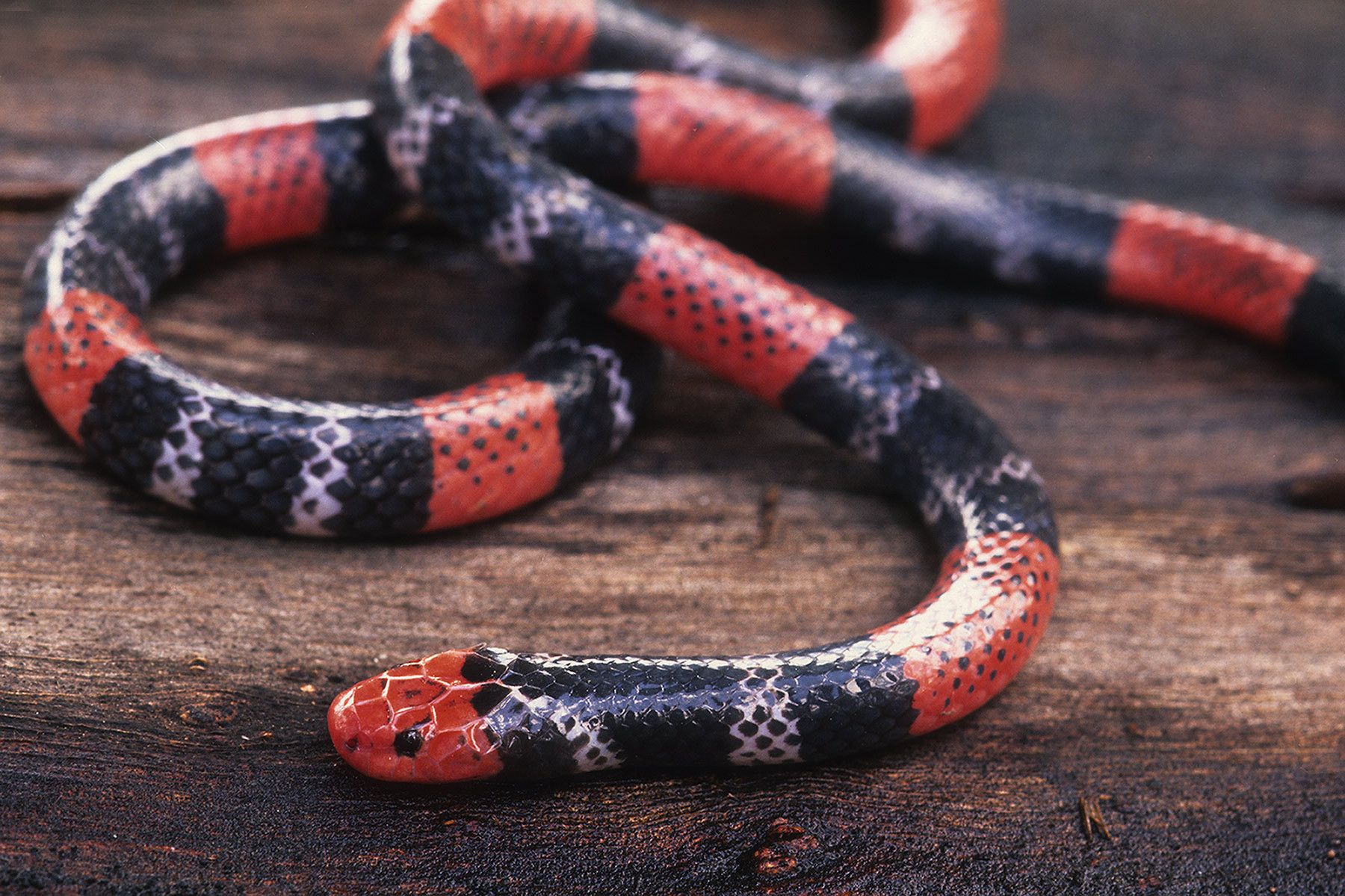
The Anchor Coralsnake (Micrurus ancoralis) is an uncommon terrestrial to semi-fossorial snake . They forage for other snakes, amphisbaenians and caecilians They rely on their warning coloration for protection but, if threatened, they will try to flee or distract potential predators with flicks of their red tail. They can strike, and their venom is neurotoxic and probably lethal to humans, but no published records of envenomation exist. This individual was photographed in northern coastal rainforest near San Lorenzo, Ecuador during a biological inventory expedition.
-
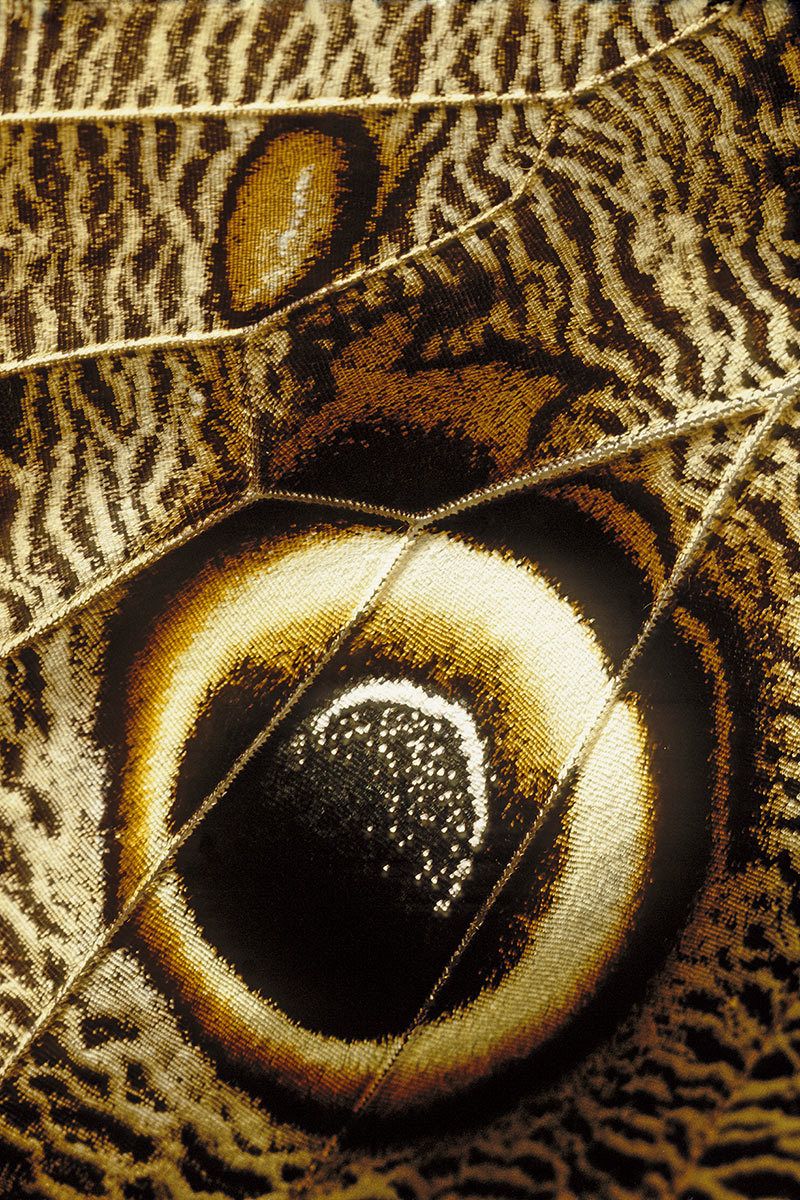
Eyespot pattern on the underwing surface of the large Owl butterfly, which is actually a moth (Caligo galba). This image interprets a spectacular example of coevolution. Resembling the eye of it’s lizard predator, it is thought to attract the lizard’s avian predators. Bird strikes stay clear of the butterfly’s body and the wings will re-generate. However, the presence of birds will keep the lizards at bay, increasing the odds of survival for the butterfly. Photographed near Mindo, Pichincha province, Ecuador
-
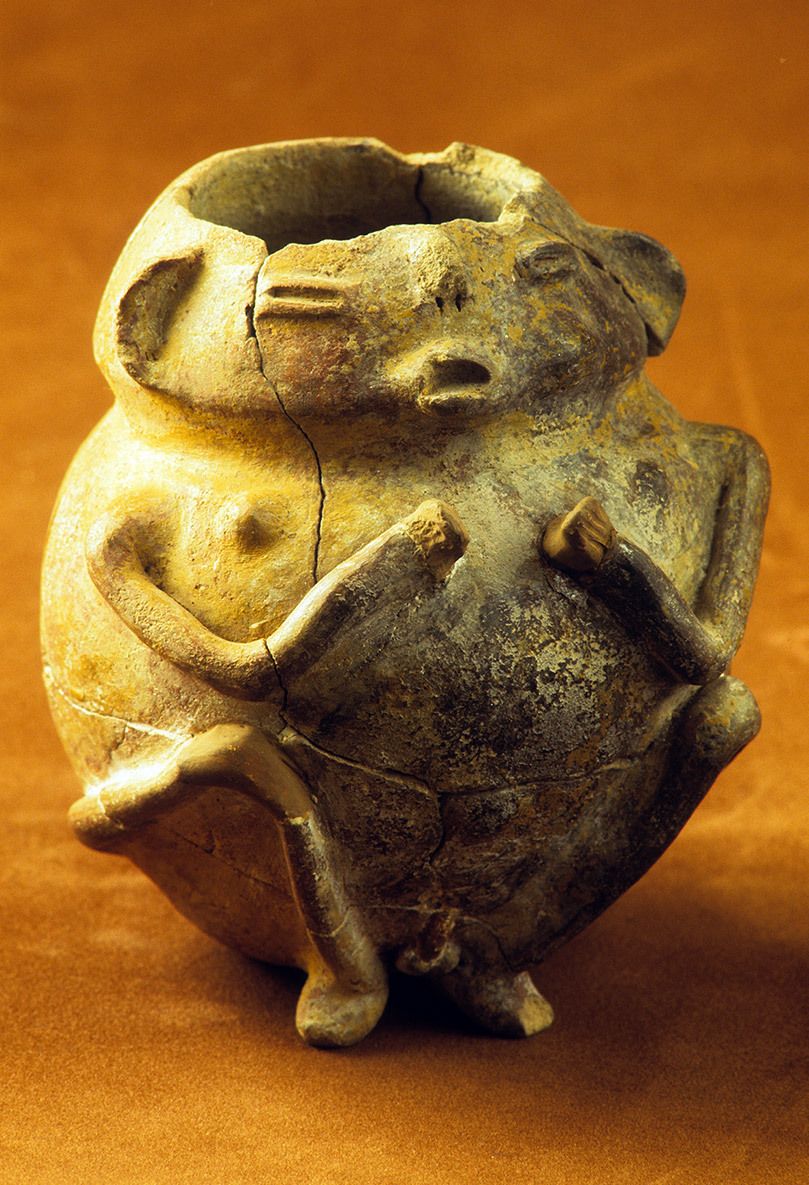
Burial urn from the pre-Incan culture of Cotunda, in the upper Amazon basin of today's Ecuador. Photographed with permission of the Museo Weilbauer, Quito, Ecuador
-
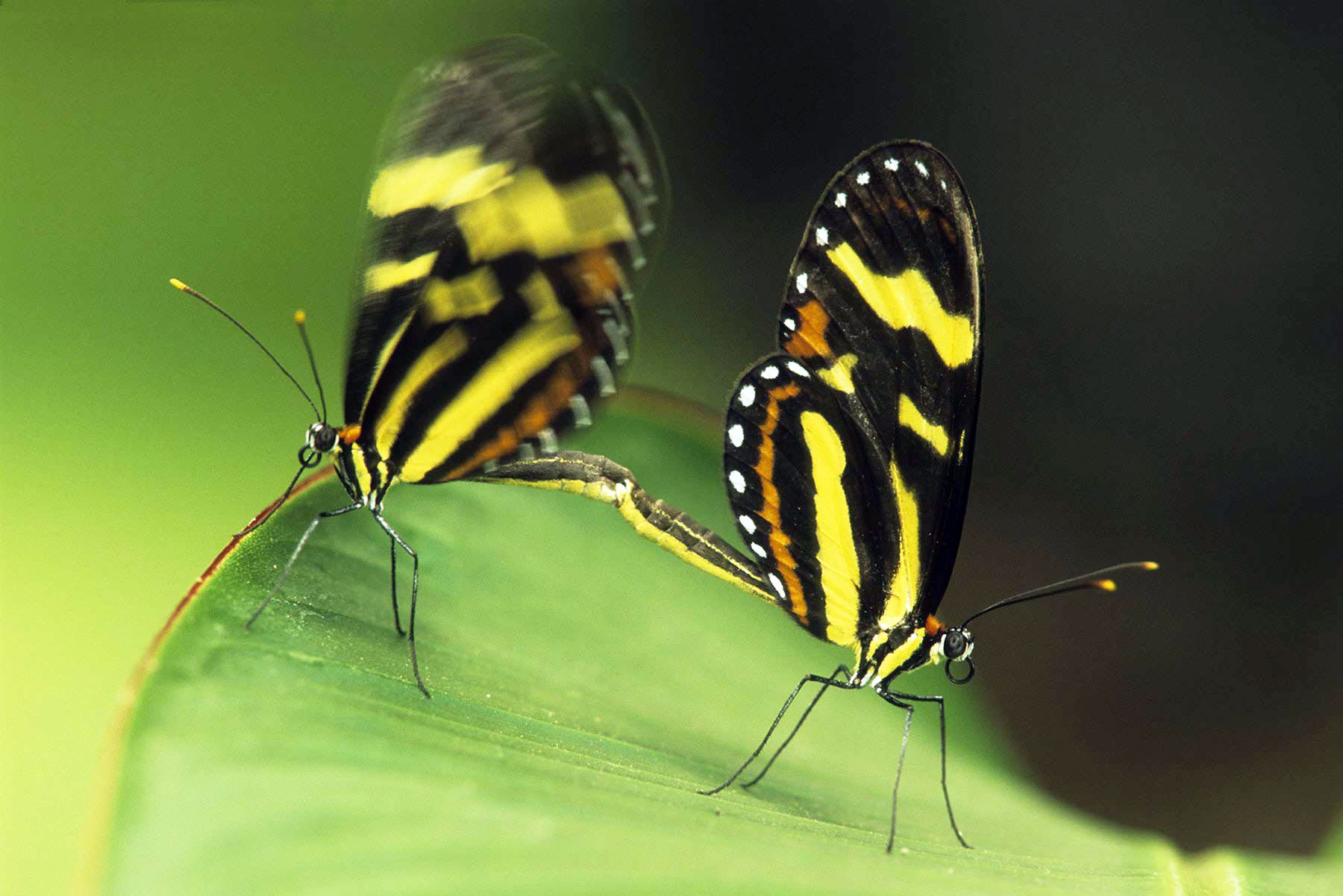
Two passionflower butterflies (Mechanitis menapis mantineus) mating on a leaf in forest near Mindo, Ecuador.
-
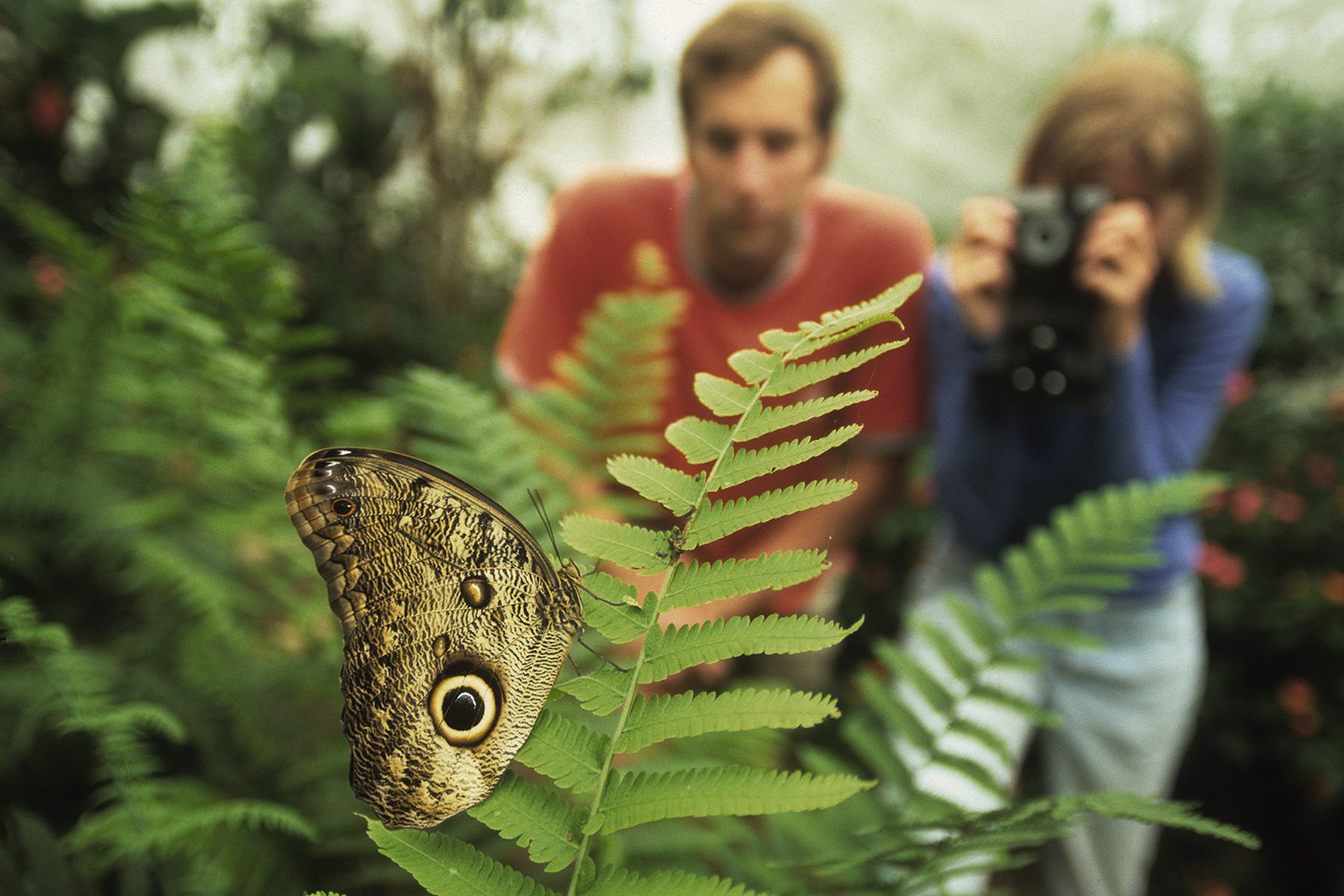
Tourists in Mindo, Ecuador photograph a large moth of the genus Caligo.
-
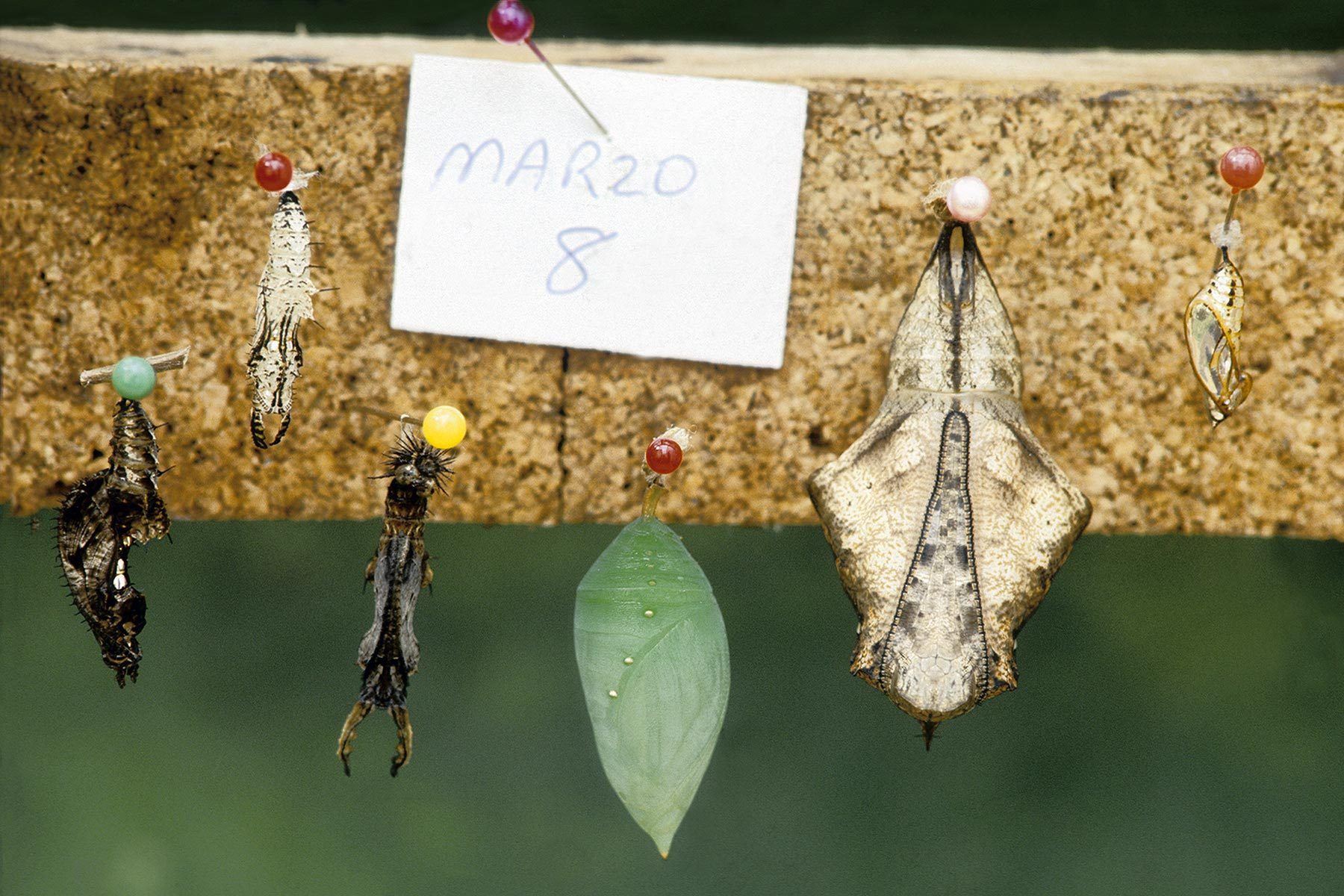
Photographed at a licensed butterfly farm in Mindo, Ecuador, each of these is a chrysalis, or protective case, for the larva of a unique species of moth or butterfly found in South America. The date indicates the expected hatching when the adults will emerge and unfold their wings. Resembling green vegetation or dry leaves, one appreciates how camouflage allows the insects to avoid predation and survive until they take flight.
-
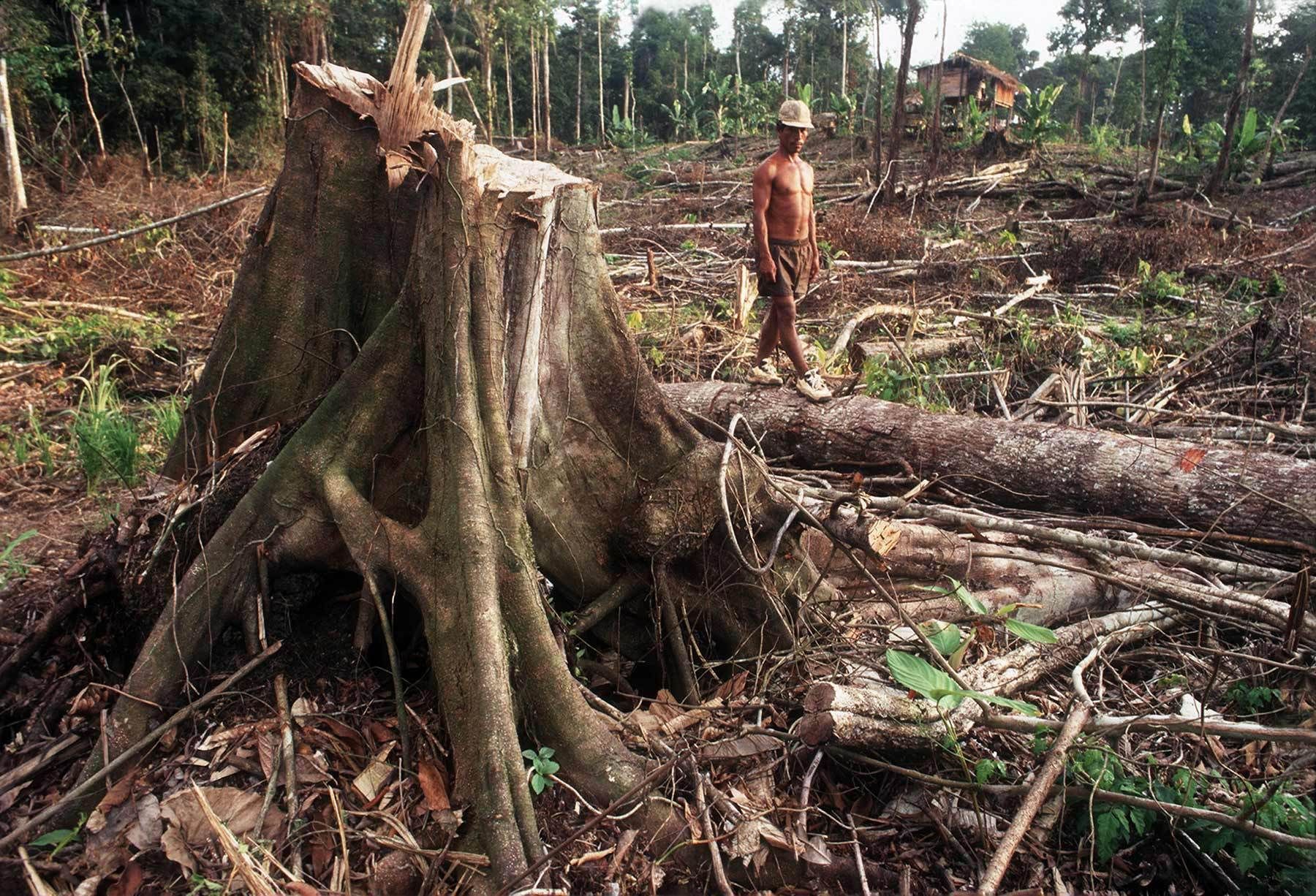
Deforestation of the Choco-Manabi Corridor of western Ecuador nearthe community of San Lorenzo, Esmeraldas province. Large tracts of rainforests in coastal Ecuador have been converted by unregulated timber extraction to African palm oil plantations.
-

These hardwood trees stacked in the port town of San Lorenzo, Ecuador are destined for a foreign buyer. Under a May 2008 expansion of the U.S. Lacey Act, U.S.-based wholesalers and agents of foreign manufacturers could be charged with wildlife-trafficking if endangered tropical hardwoods are imported into the U.S. Those who sell, receive or transport illegal timber without proper import declarations could face penalties or criminal prosecution. Today, certification for "conflict free" timber is a wise choice, good publicity for the industry and often times more profitable.
-
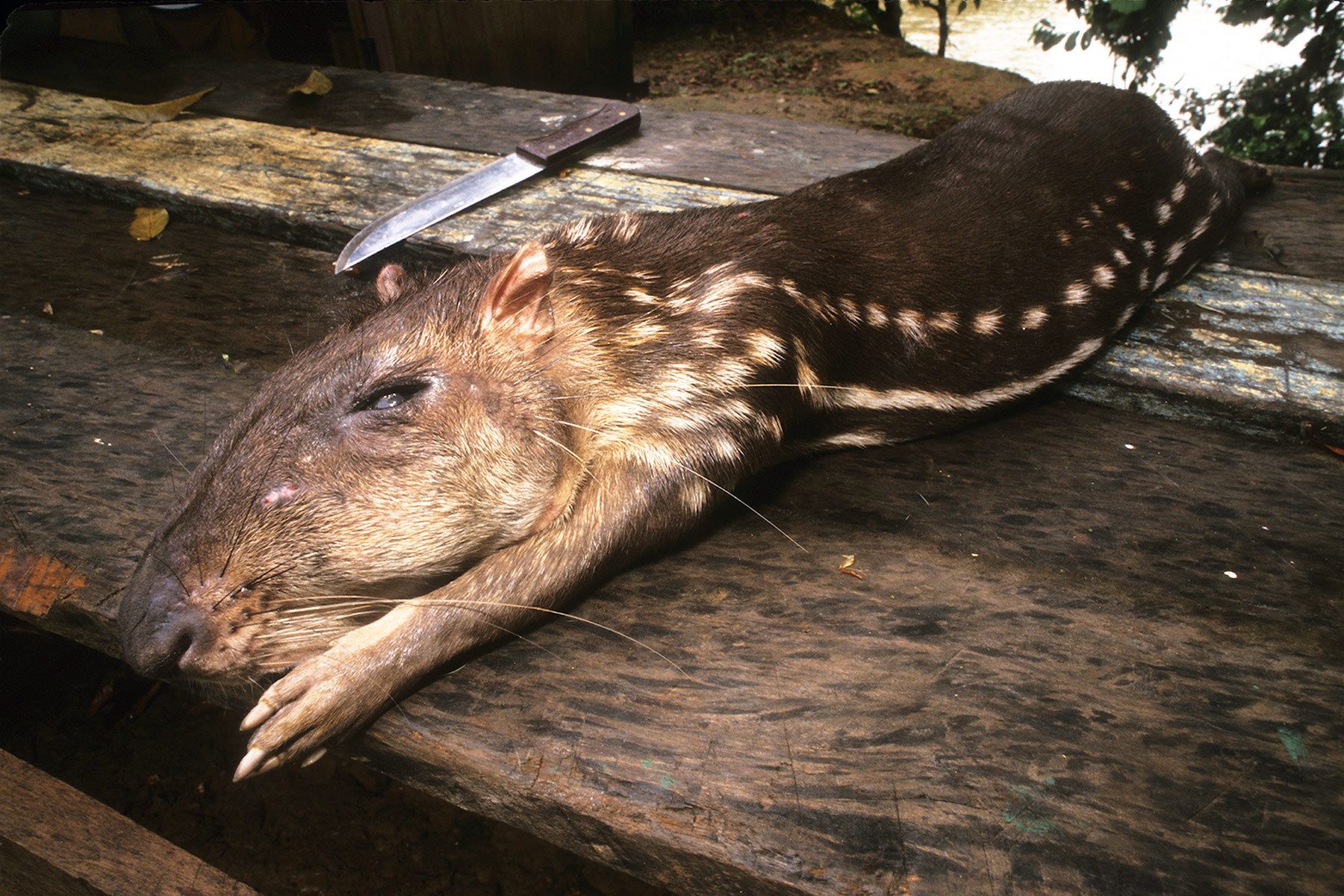
The lowland Paca (Cuniculus paca) is a large rodent of the new world tropics found between central Mexico and Argentina. It is also known as the 'Huanta" (pronounced "want-tah") to Ecuadorians. This adult, weighing about 25 pounds, was hunted by member of the community of La Boca, Ecuador on the Mataje River. The Mataje River forms the border between Ecuador and Colombia. This is simply part of life in most rainforest communities. While this animal was hunted while I visited the community, I can assure you that the animal was neither hunted at my request nor did I motivate the hunters with a reward. No offer of cash, trinkets or gratitude of a photographer seeking wildlife. Just being in the field and involved with local people can lead to these glimpse of day-to-day life in rainforest environments. Paca are still pretty common. The IUCN lists the paca as a species of least concern. While hunting exerts local pressure, they have a good reproductive rate. A far greater threat than small scale, family-based
-
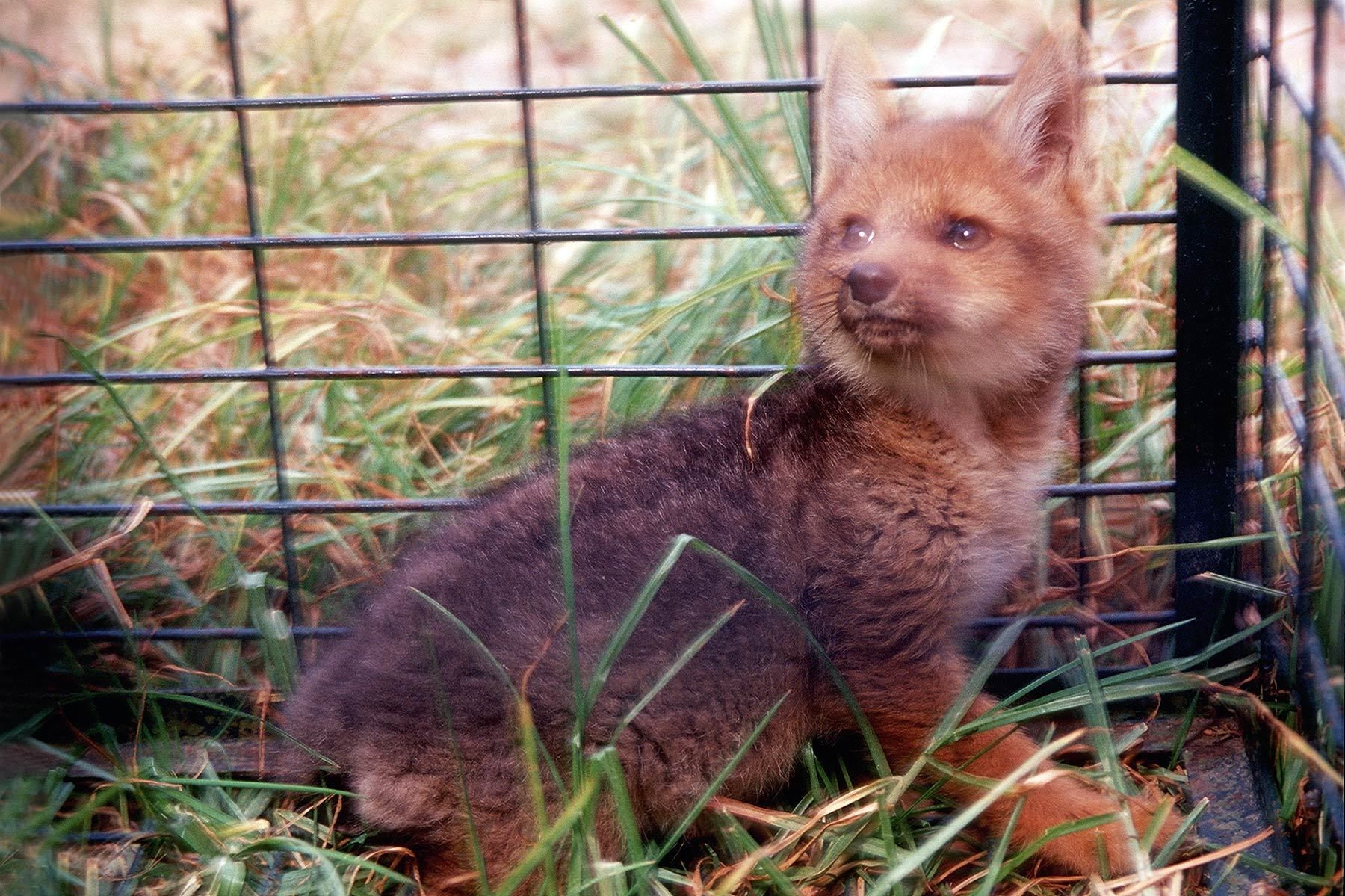
Young Andean fox (Pseudalopex culpaes) orphaned by hunting, photographed during rescue near the El Angel Ecological Reserve, northern Ecuador.
-
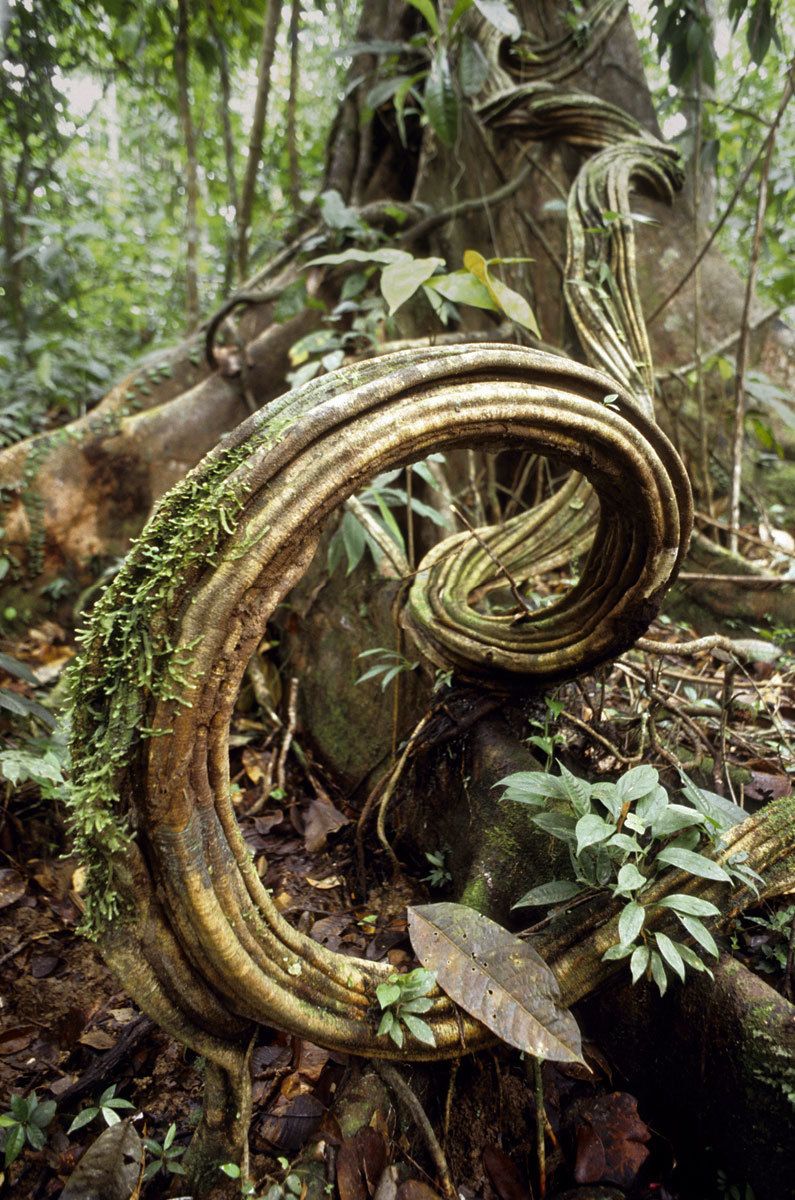
Large vines like this one are the super-highways of the rainforest understory, carrying small mammals and other fauna between the canopy and the forest floor. This is a monkey ladder vine (Bauhinia sp.). in lowland rainforest of Ecuador.
-
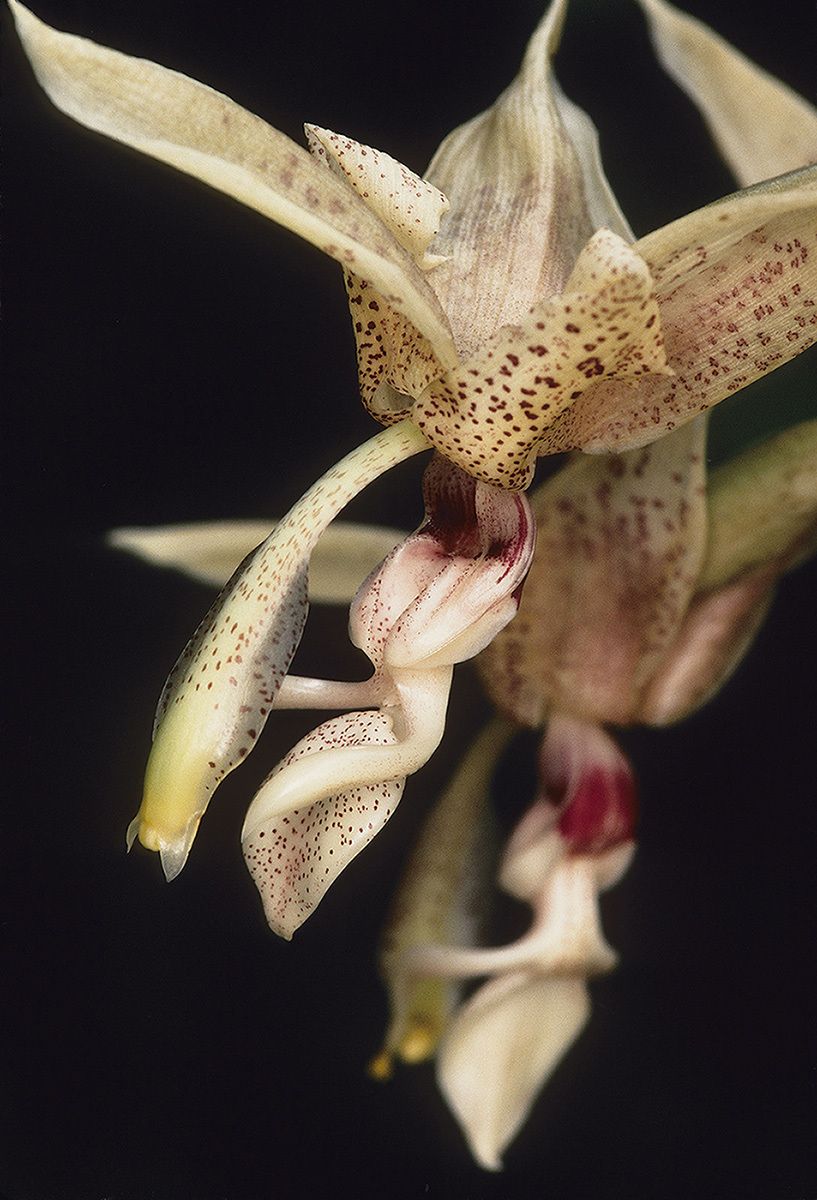
Orchid of the genus Stanhopea. This neotropical group occurs from Mexico to Brazil. Photographed in cultivation near Tena, Ecuador
-
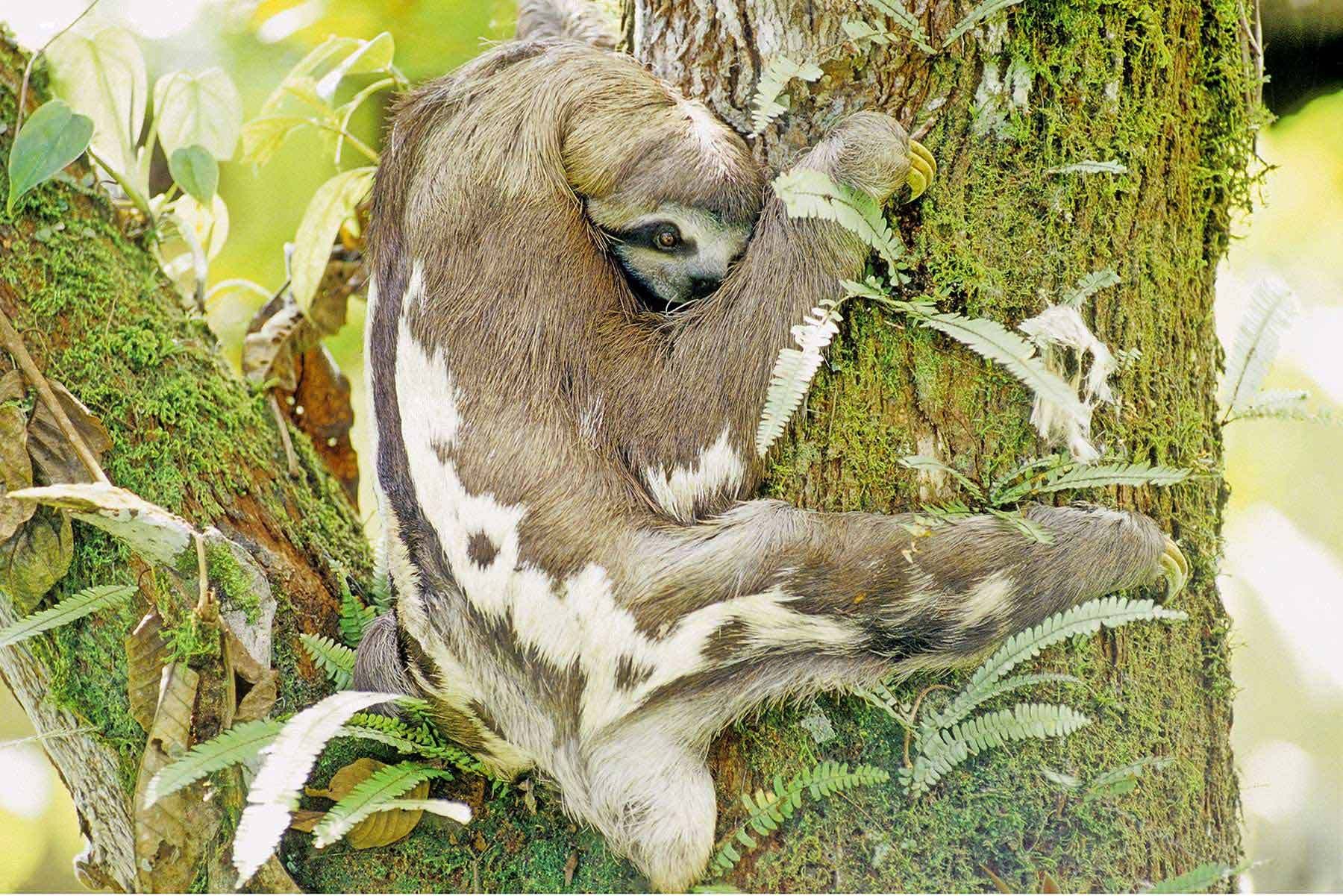
The Brown-throated three-toed sloth's (Bradypus variegatus) slow metabolism keeps it from moving too quickly. They are so sedentary that alga have an opportunity to grow on their coarse fur providing camouflage. That's all good defense. This individual was rescued from a market for ten dollars. It would have become sloth soup.
-
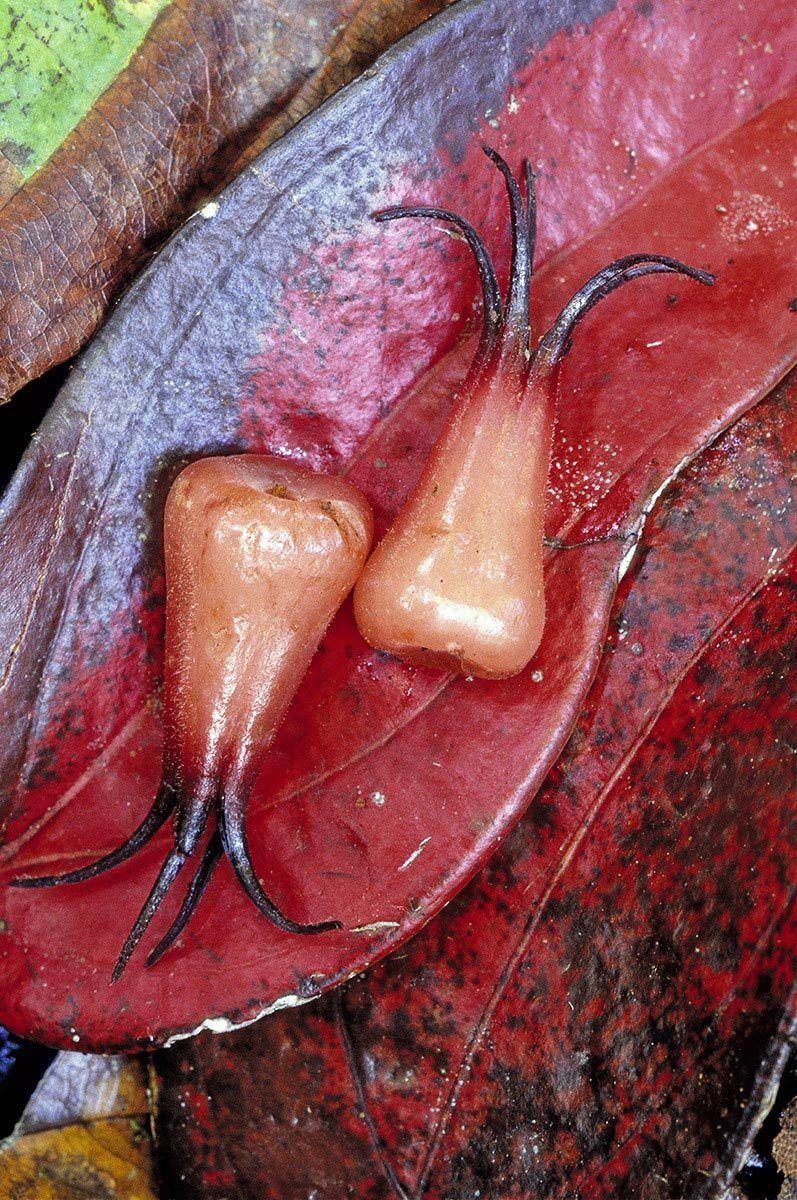
Known locally as "mountain pepper", these fallen fruit (Ceratostema spp.) are known by locals for their their tangy flavor which can be a nice pick-me-up on return from a long hike in the rainforest.Yasuni National Park & UNESCO Biosphere Reserve, Ecuador
-
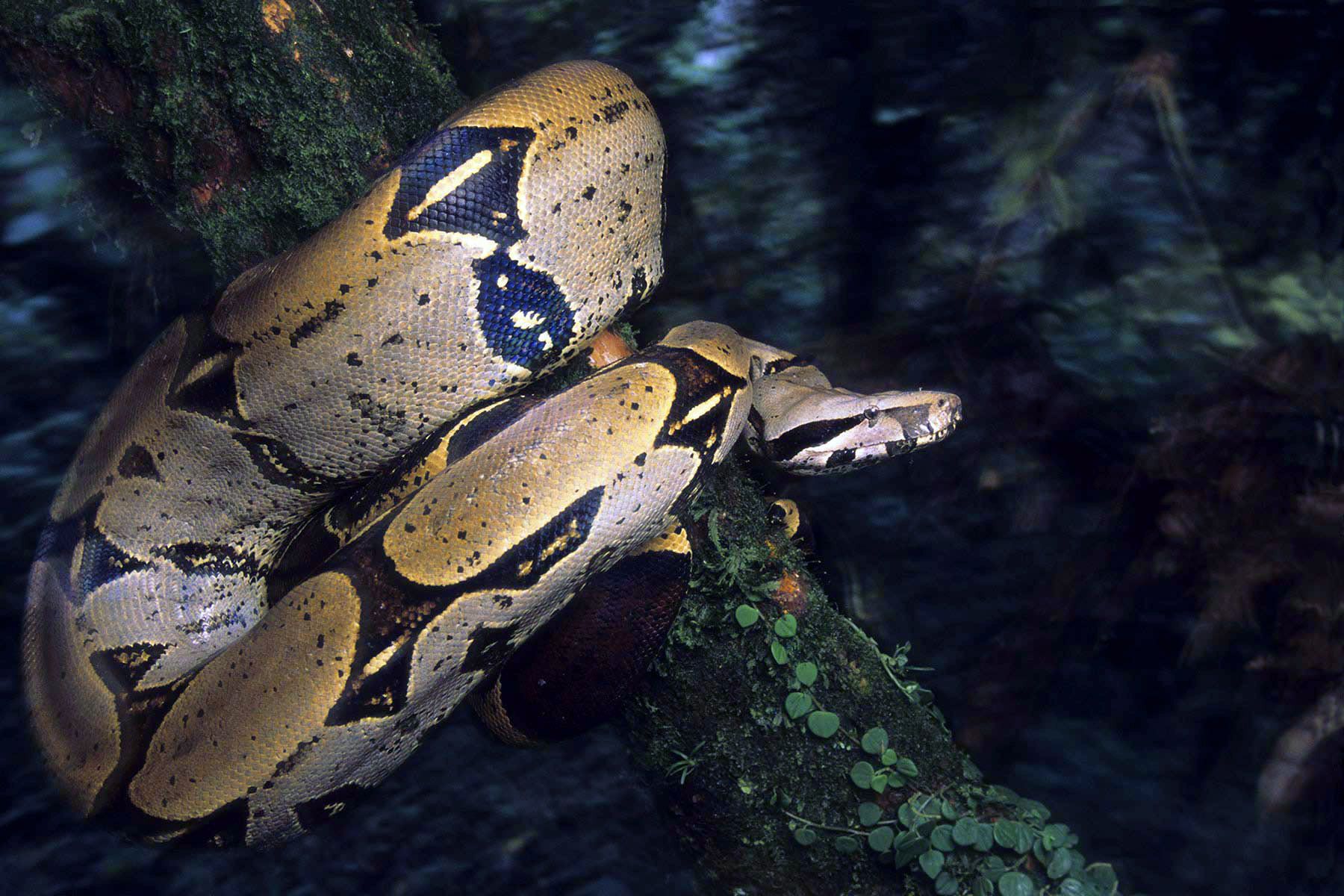
The boa constrictor (Boa constrictor) is a skilled predator of the forest understory. Today, big boas still thrive in primary rainforest. Photographed during wildlife inventory expedition in the Yasuní National Park & UNESCO Biosphere Reserve, Ecuador.
